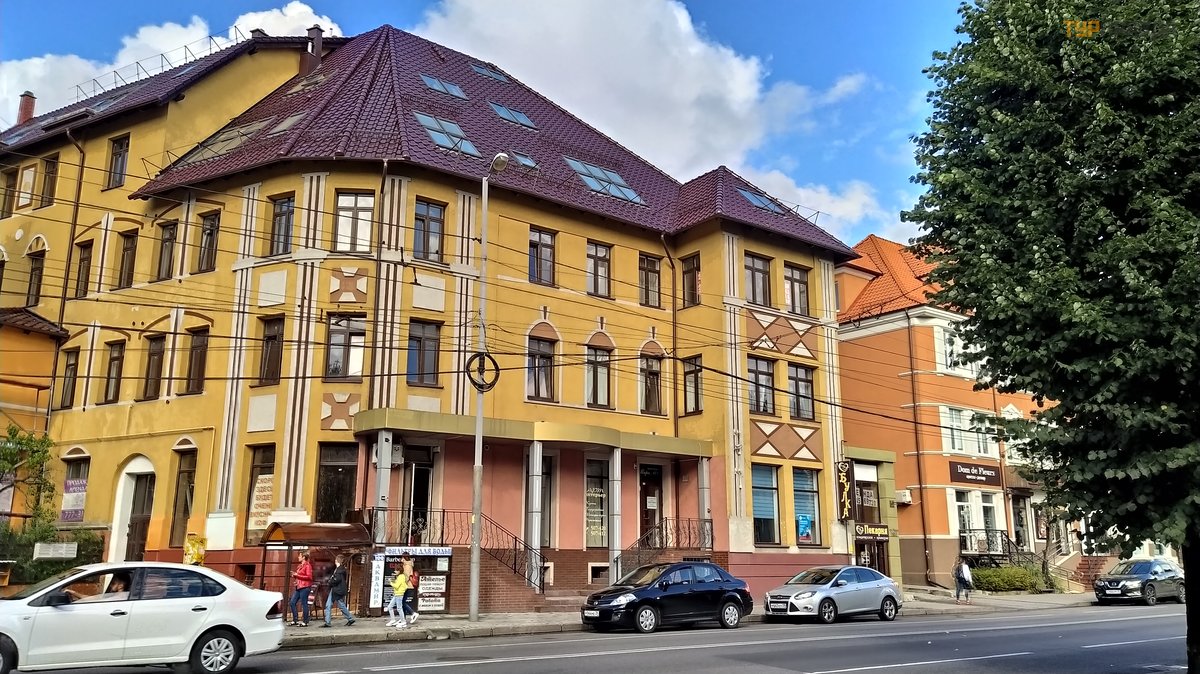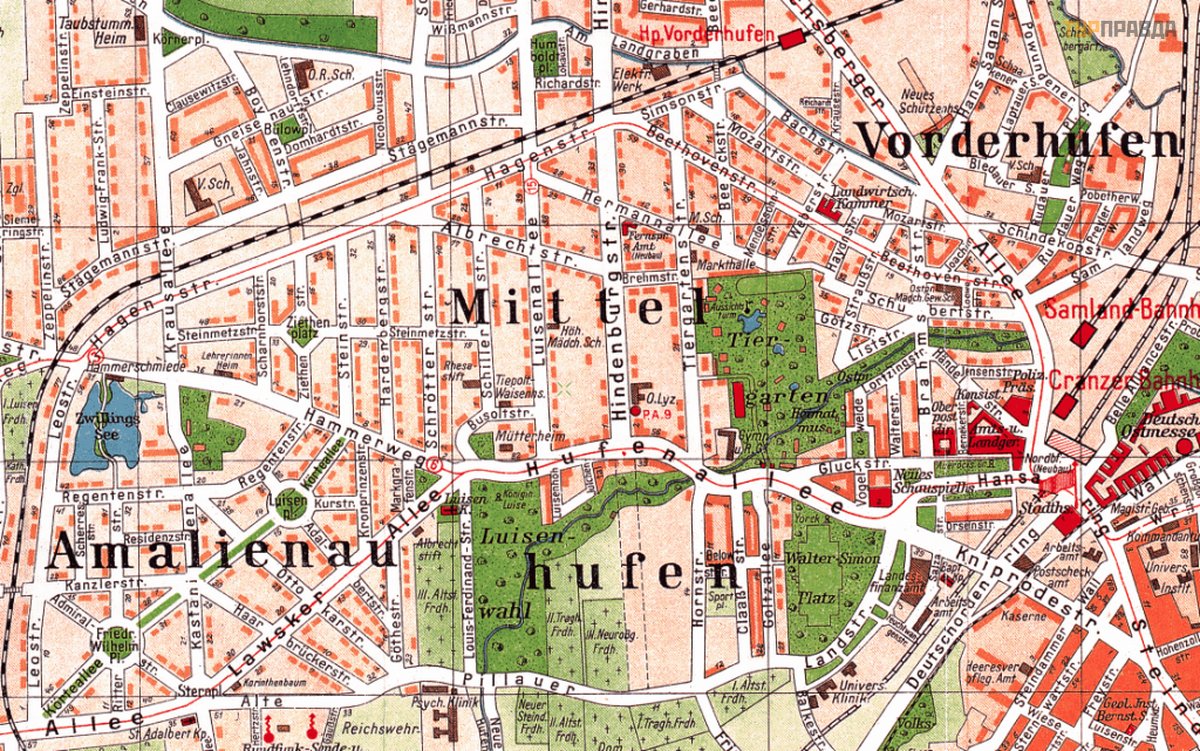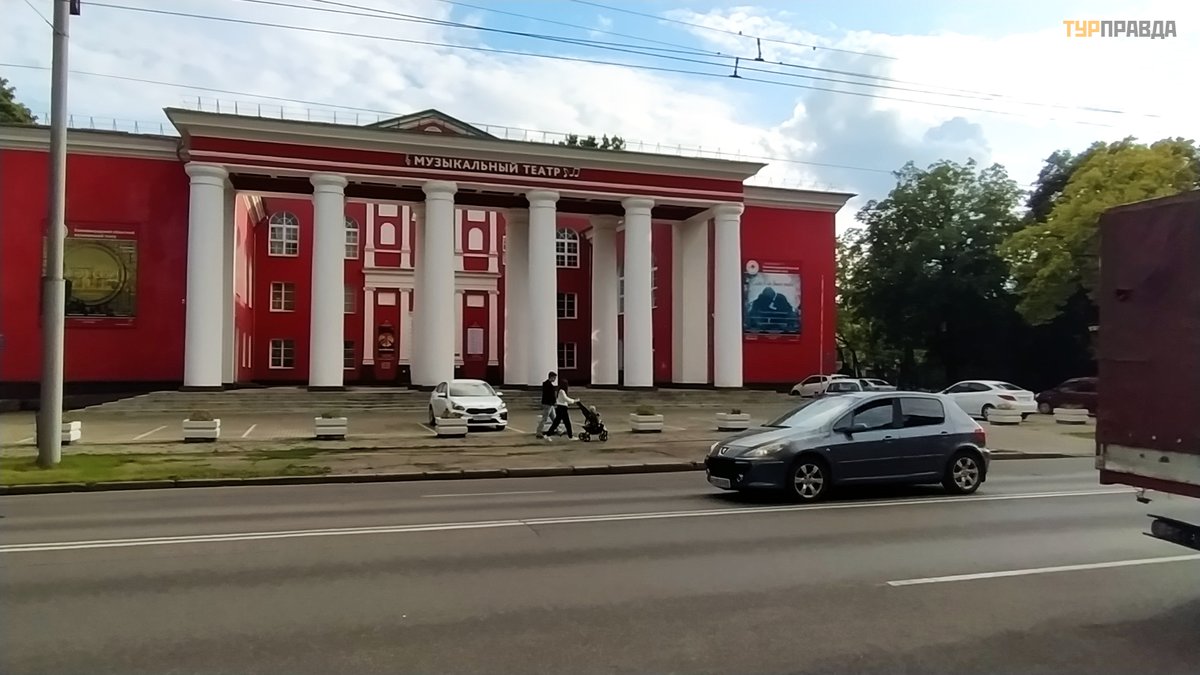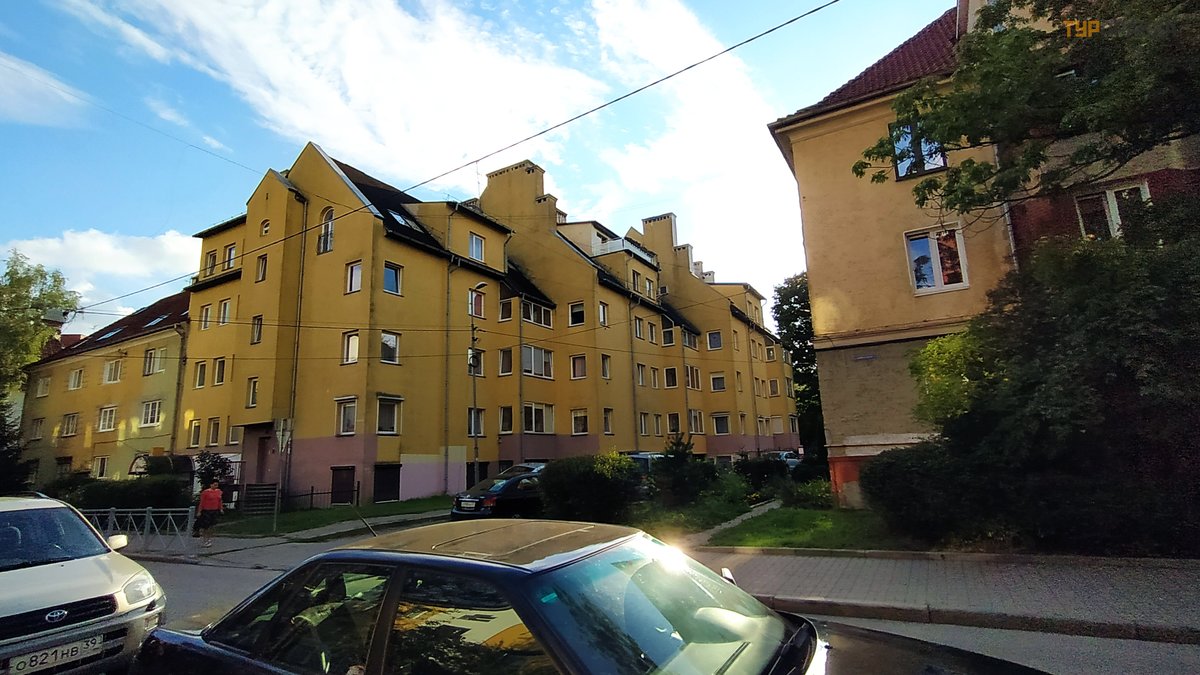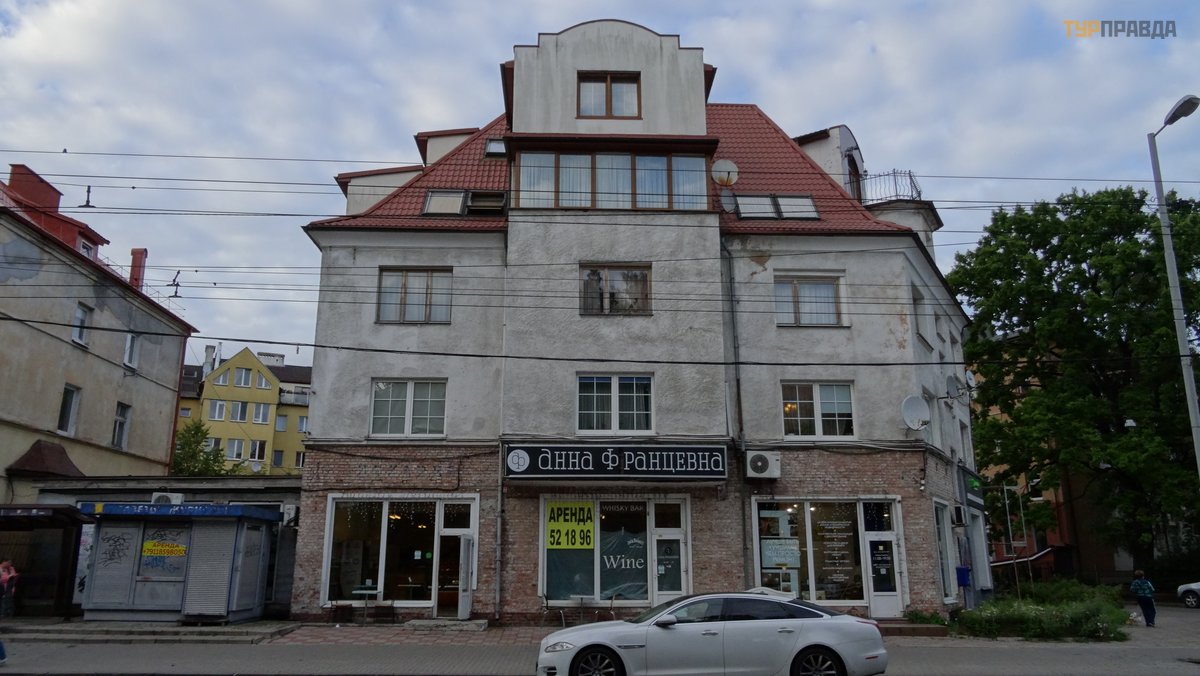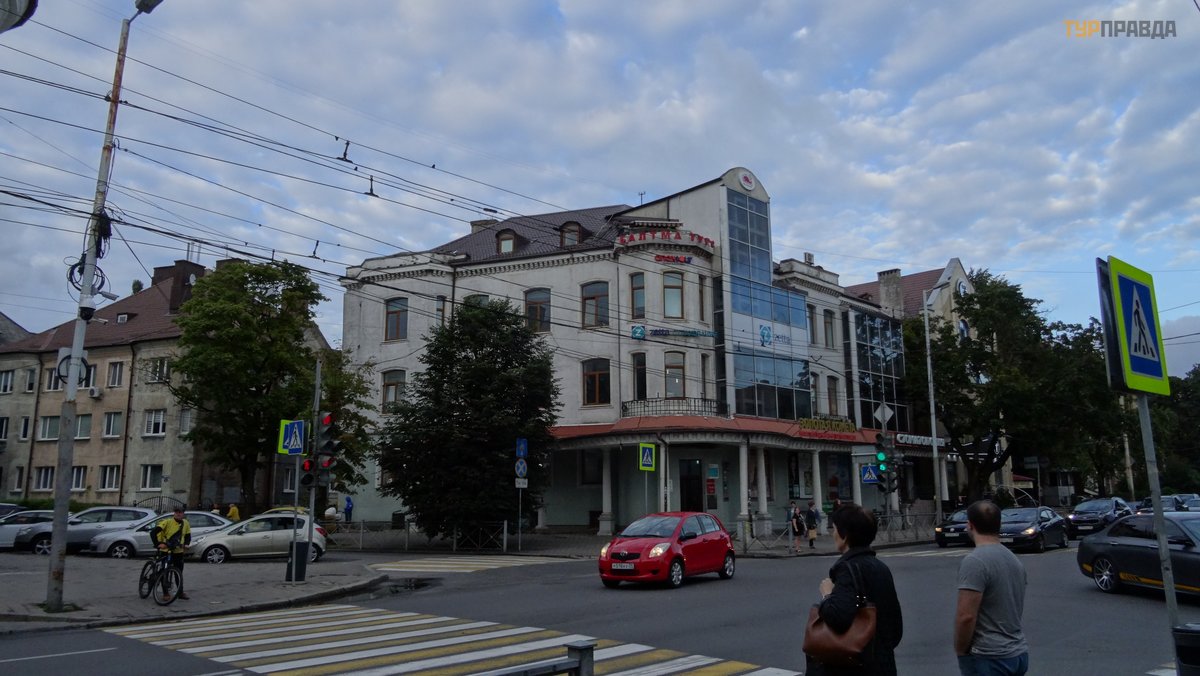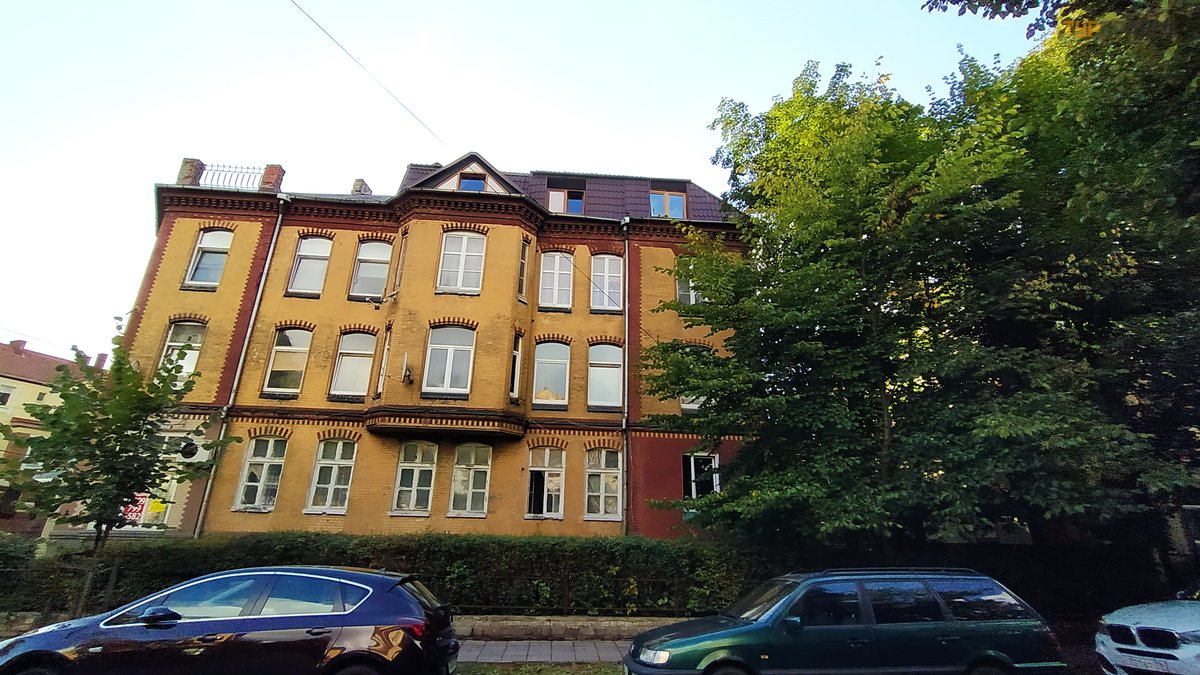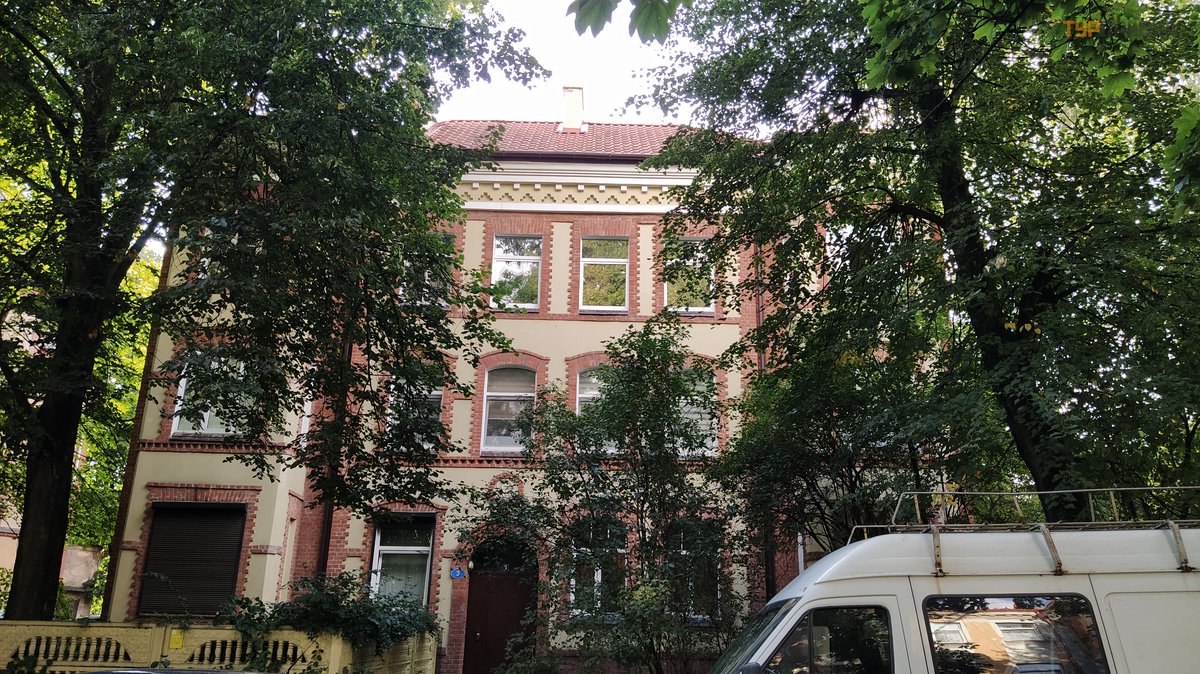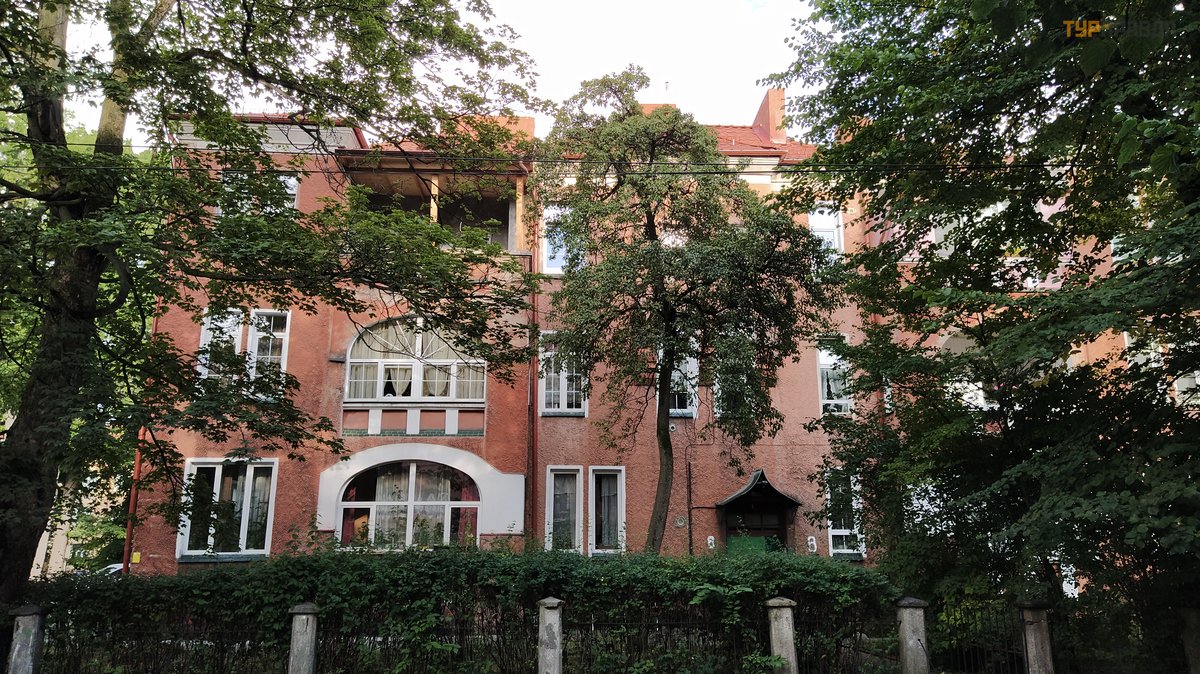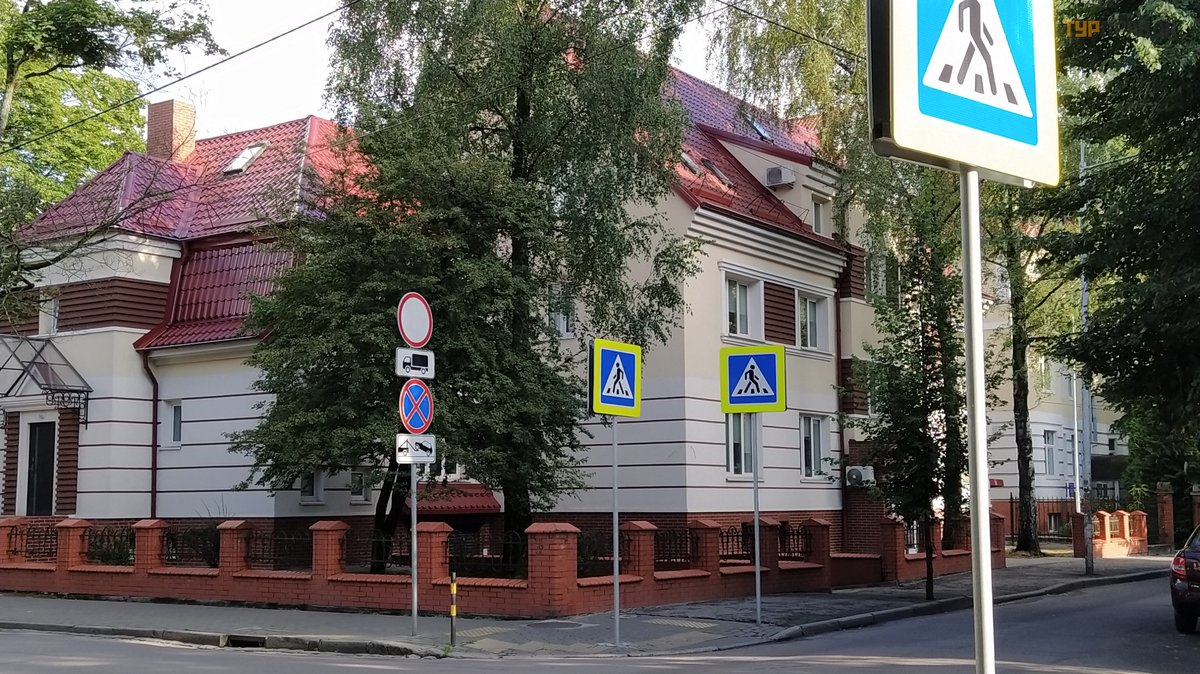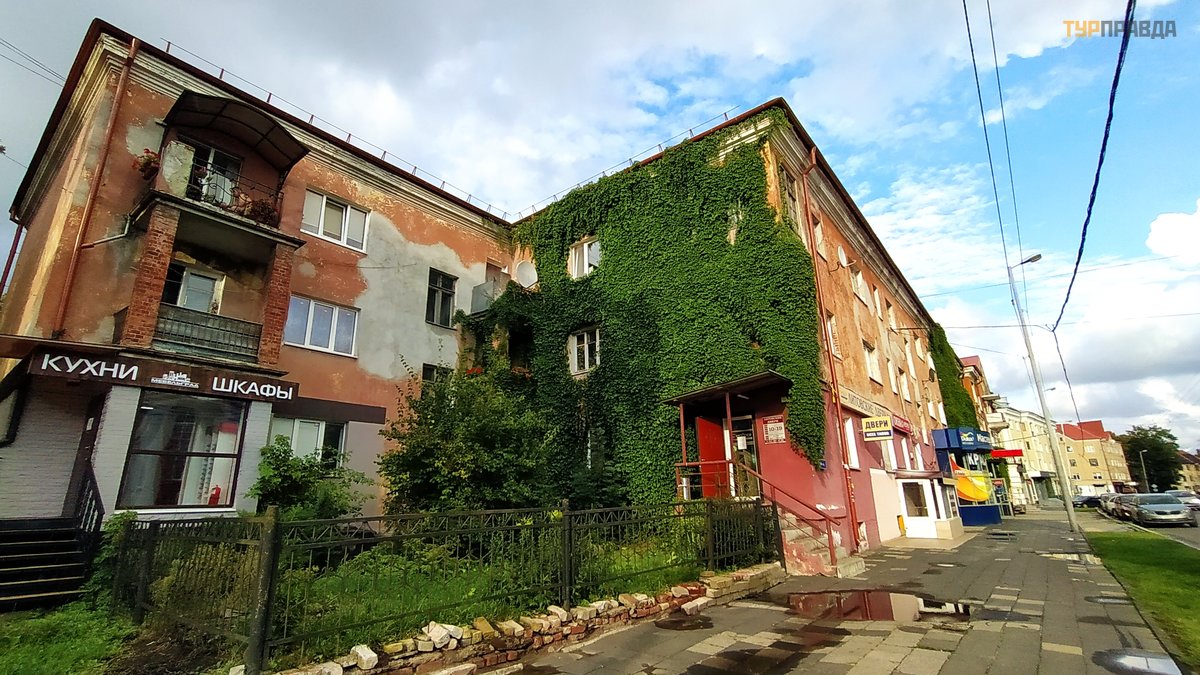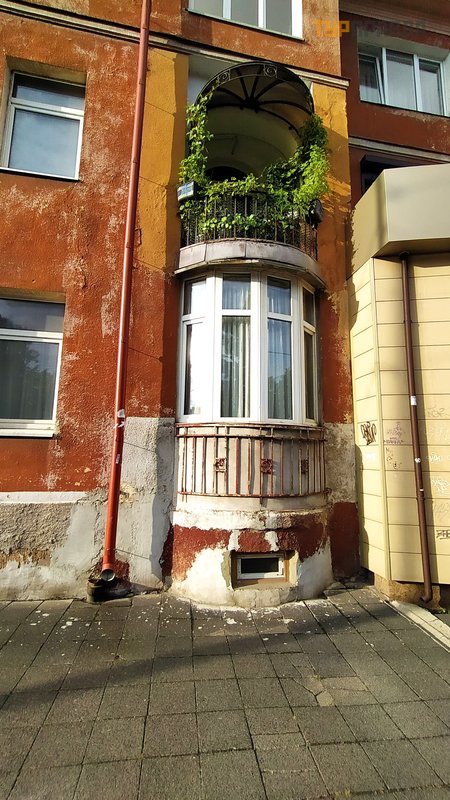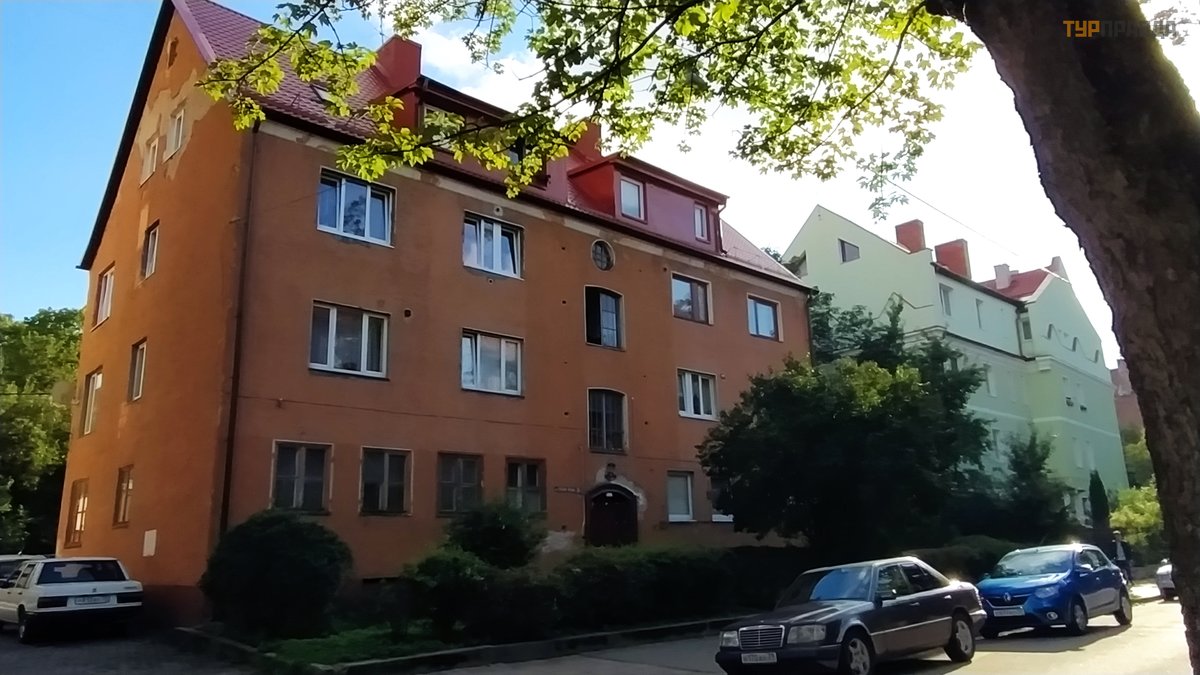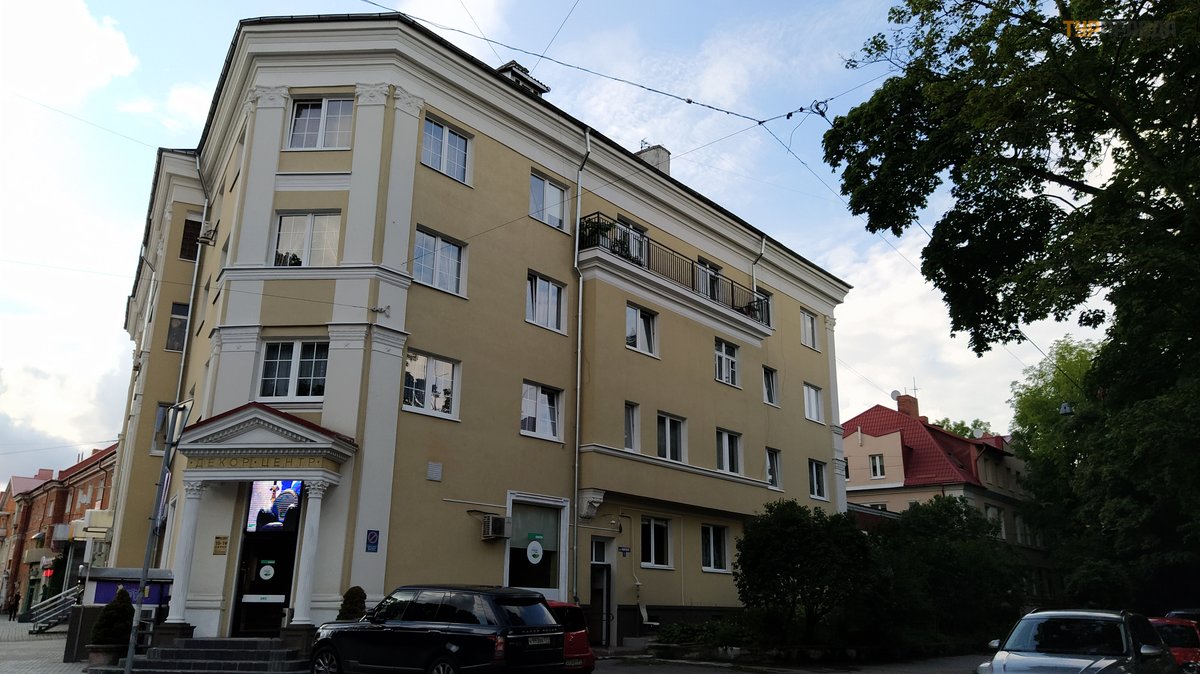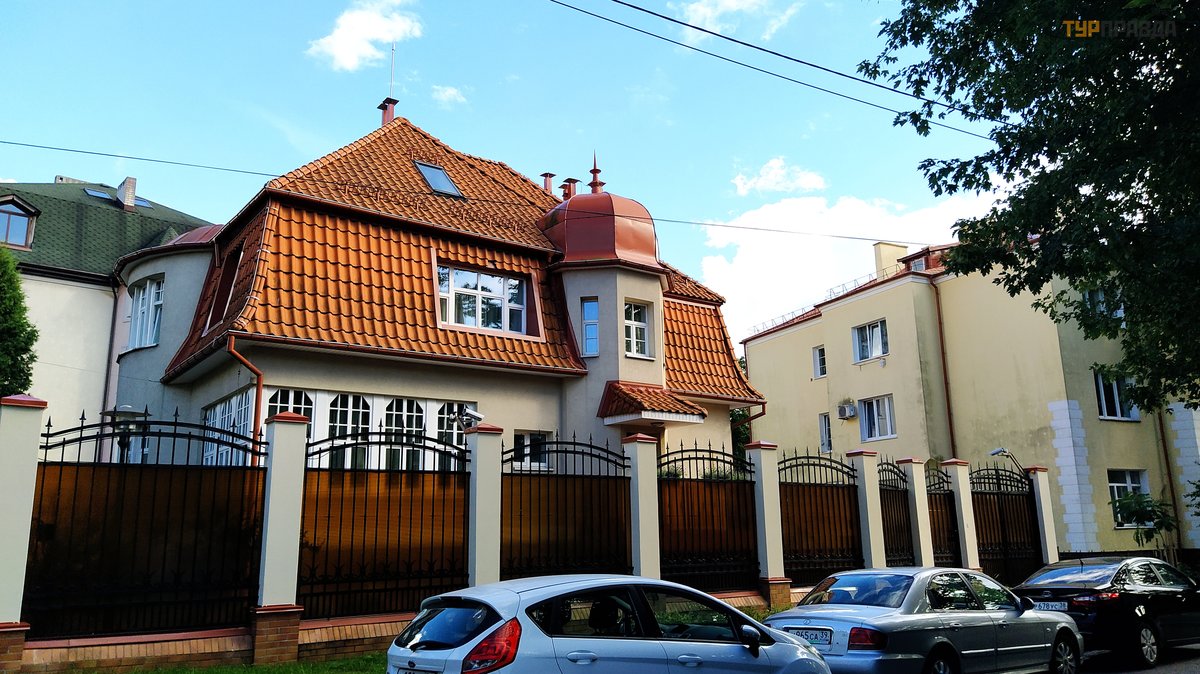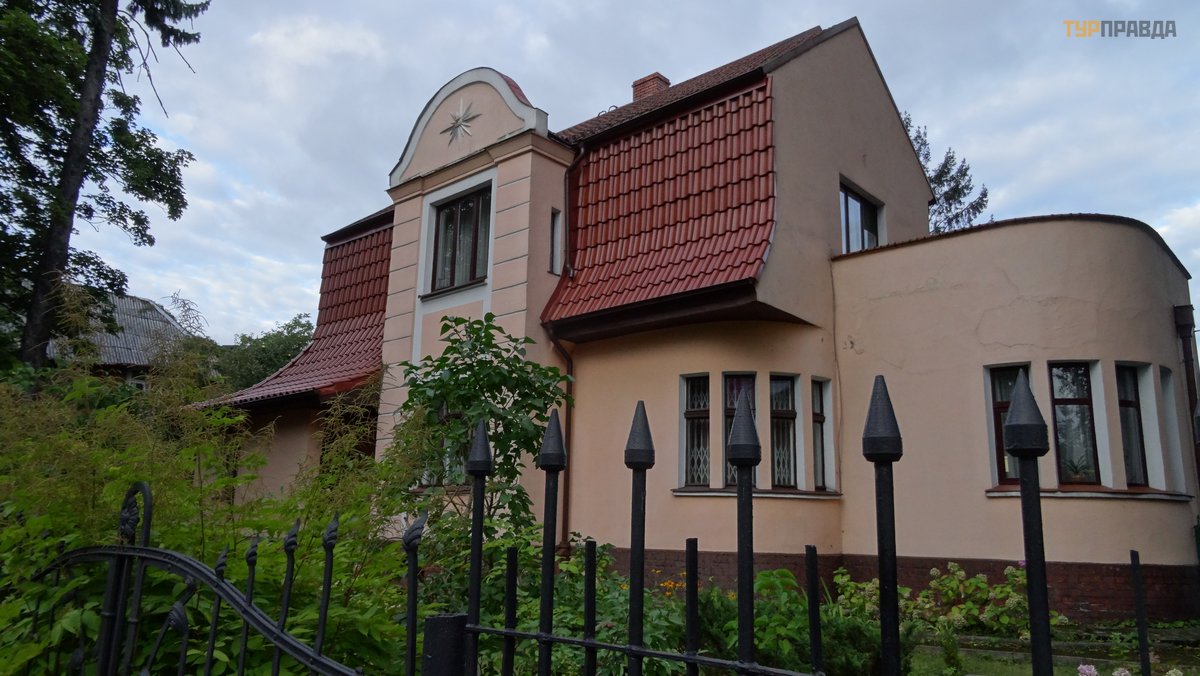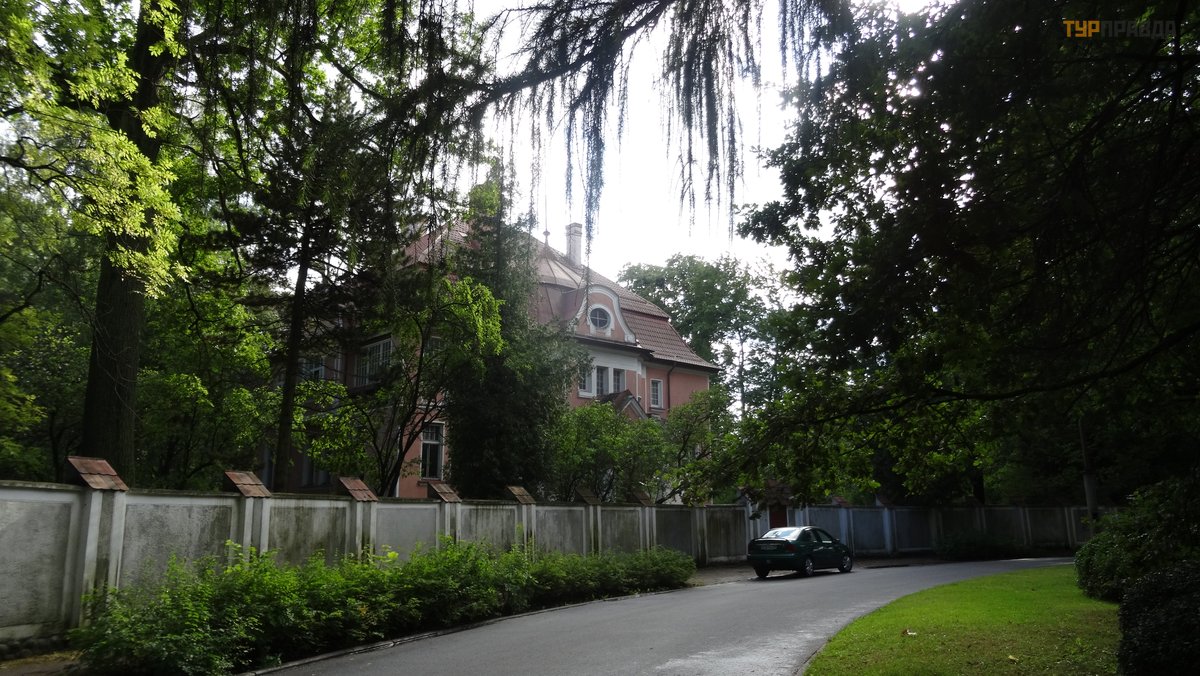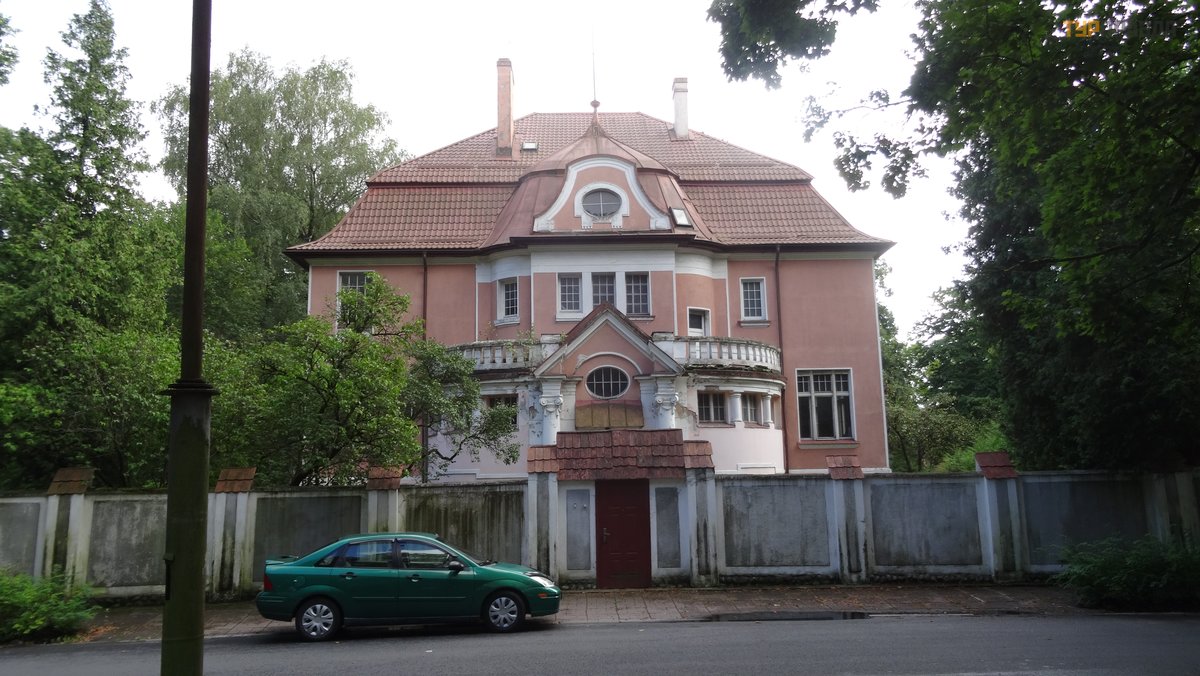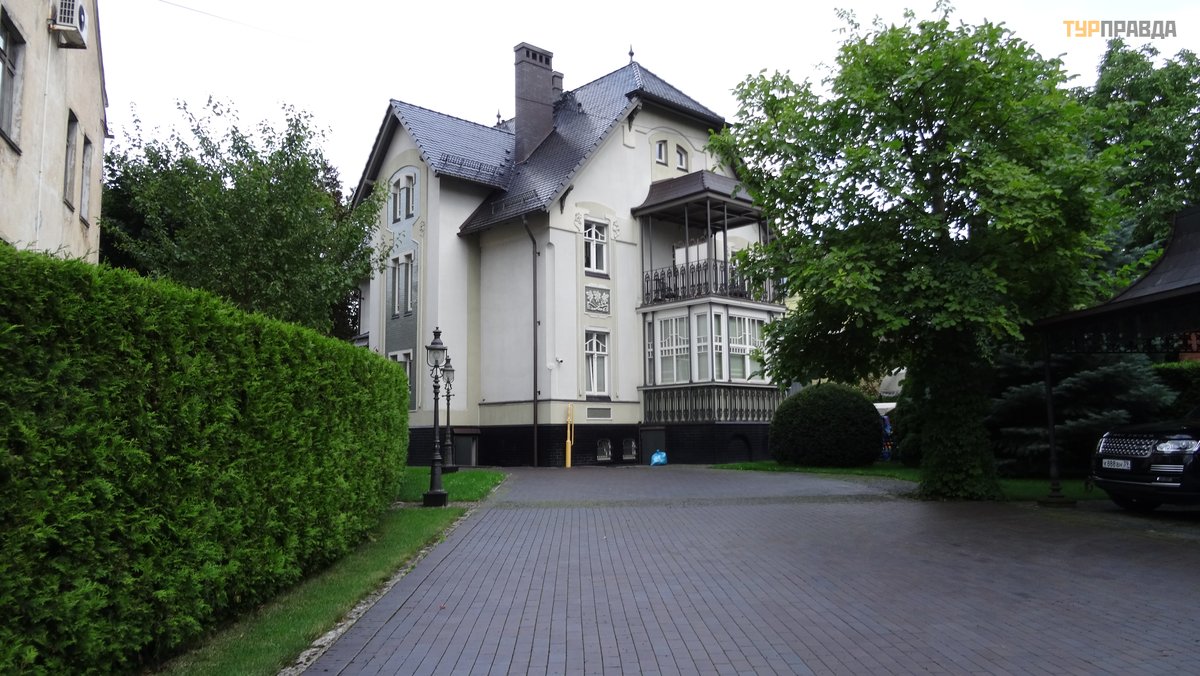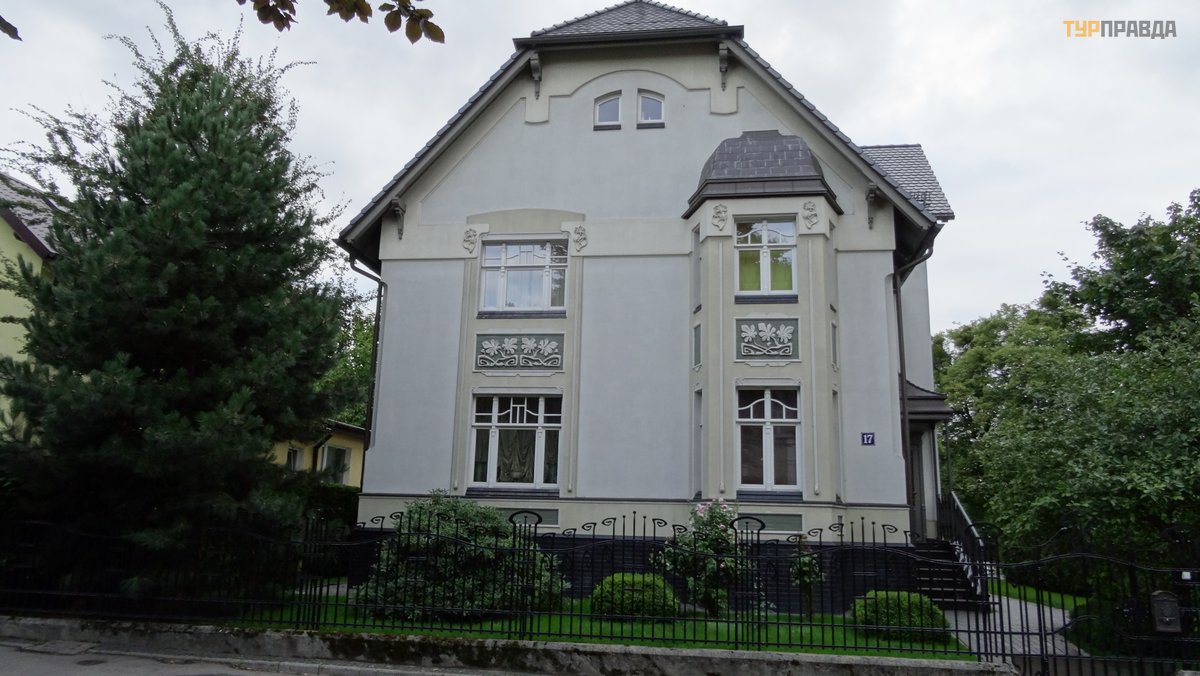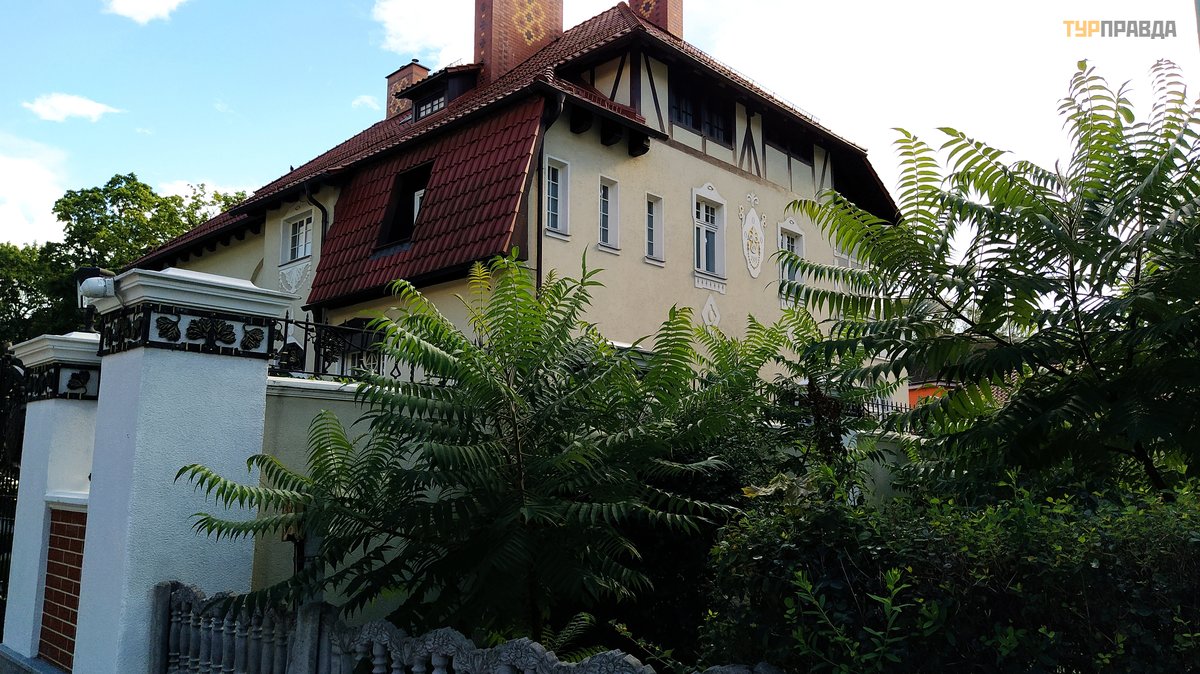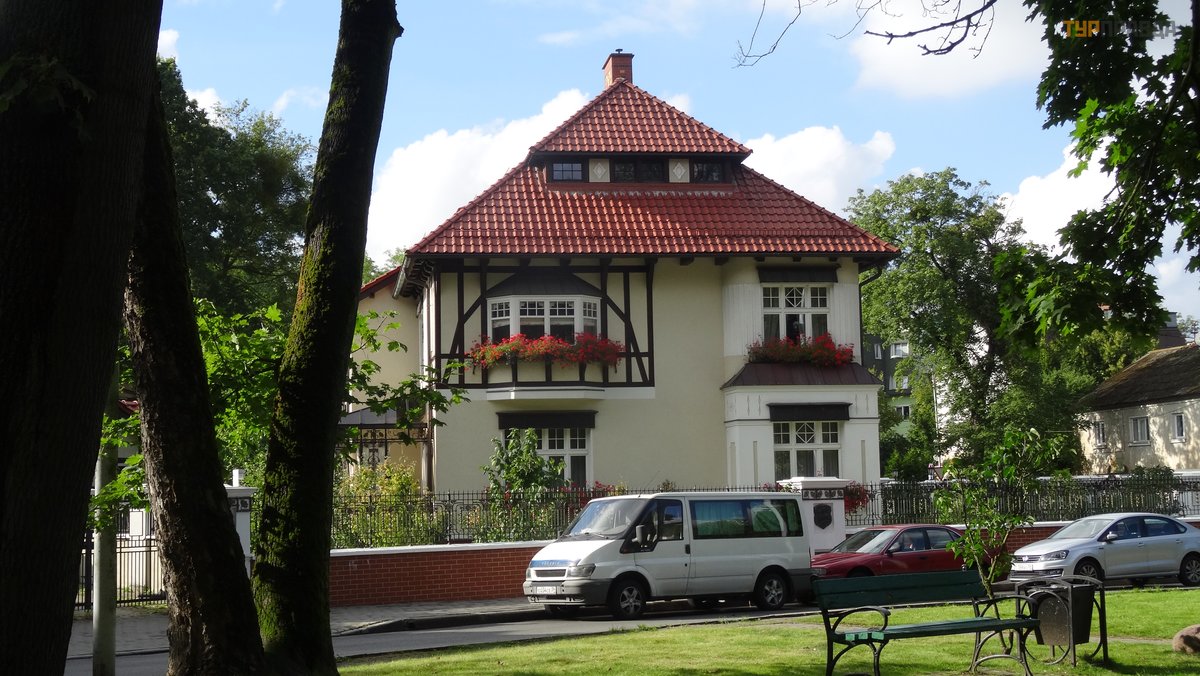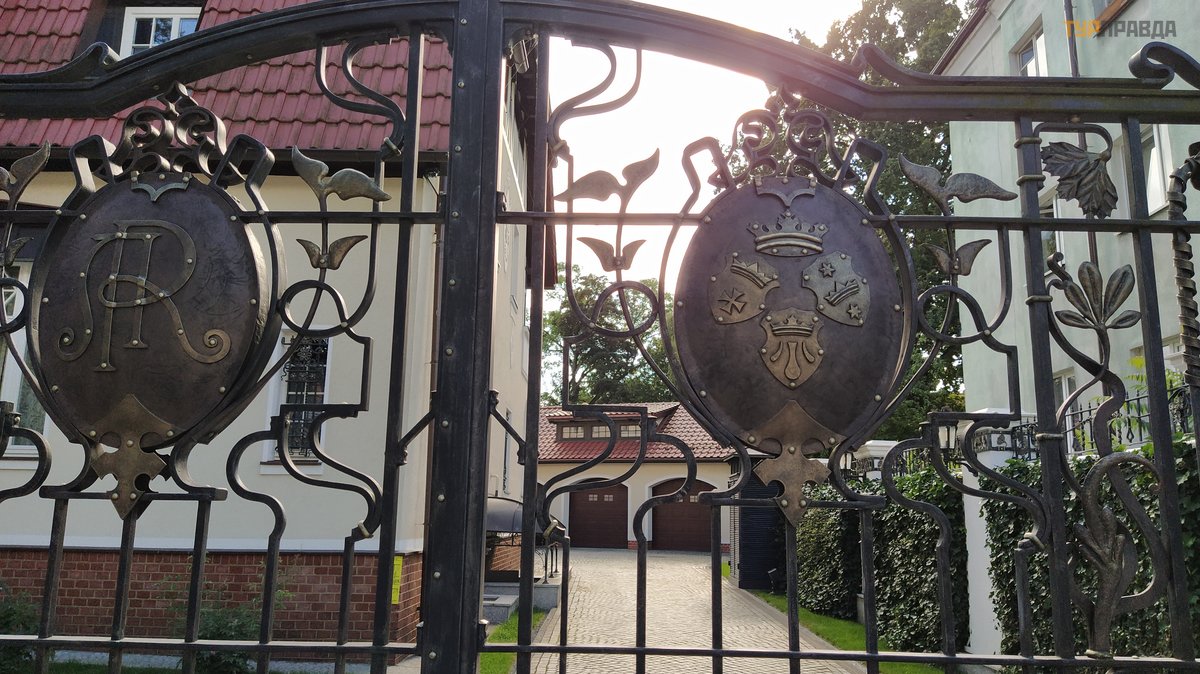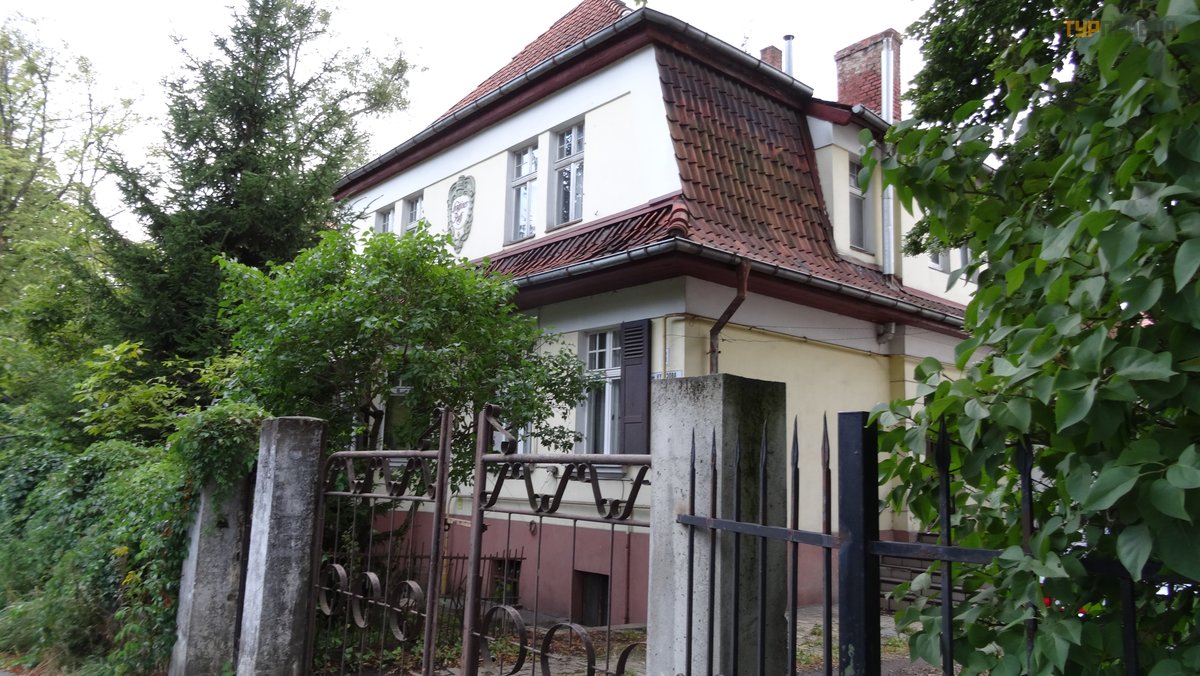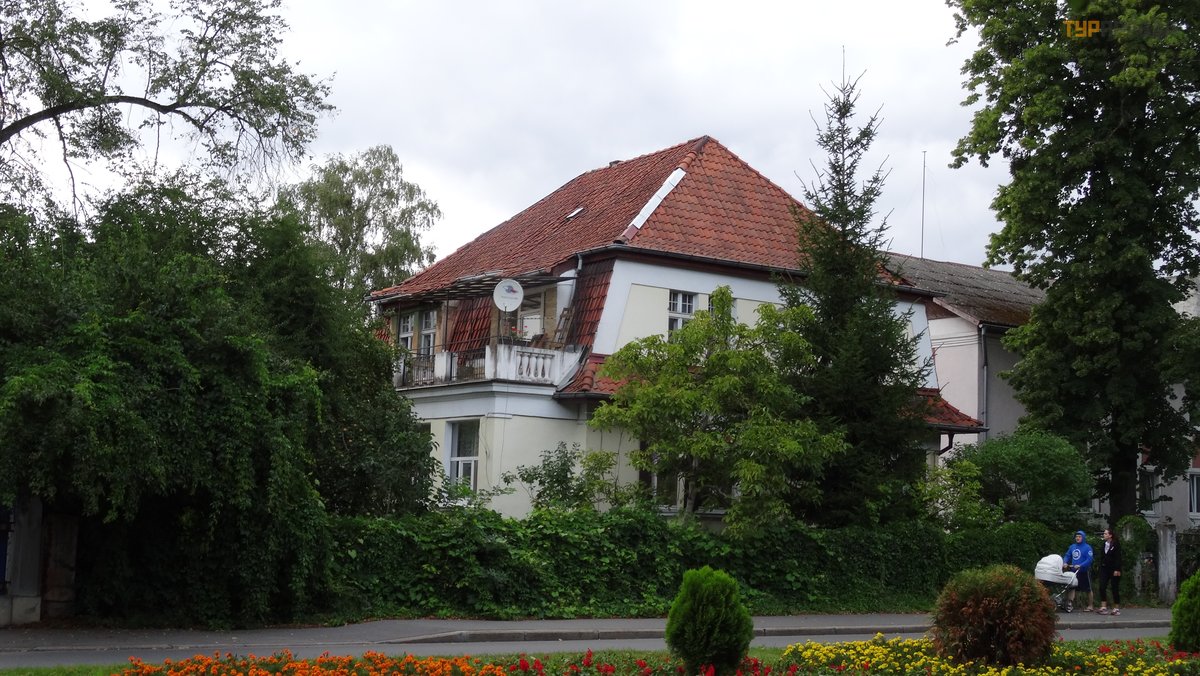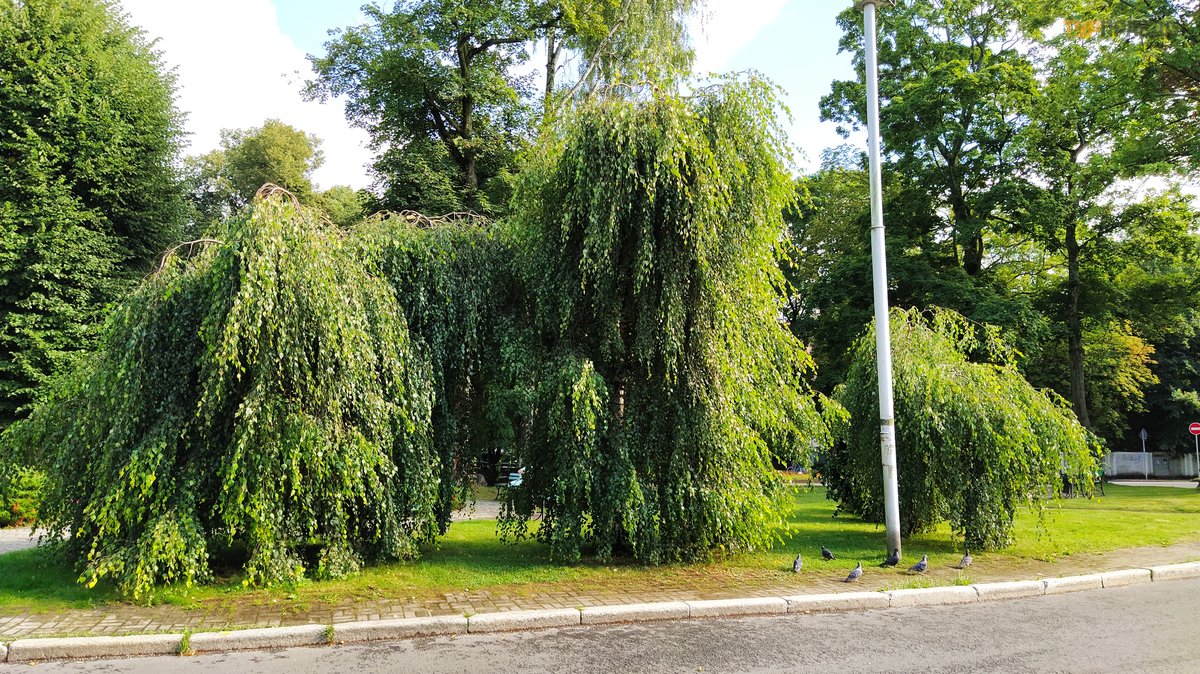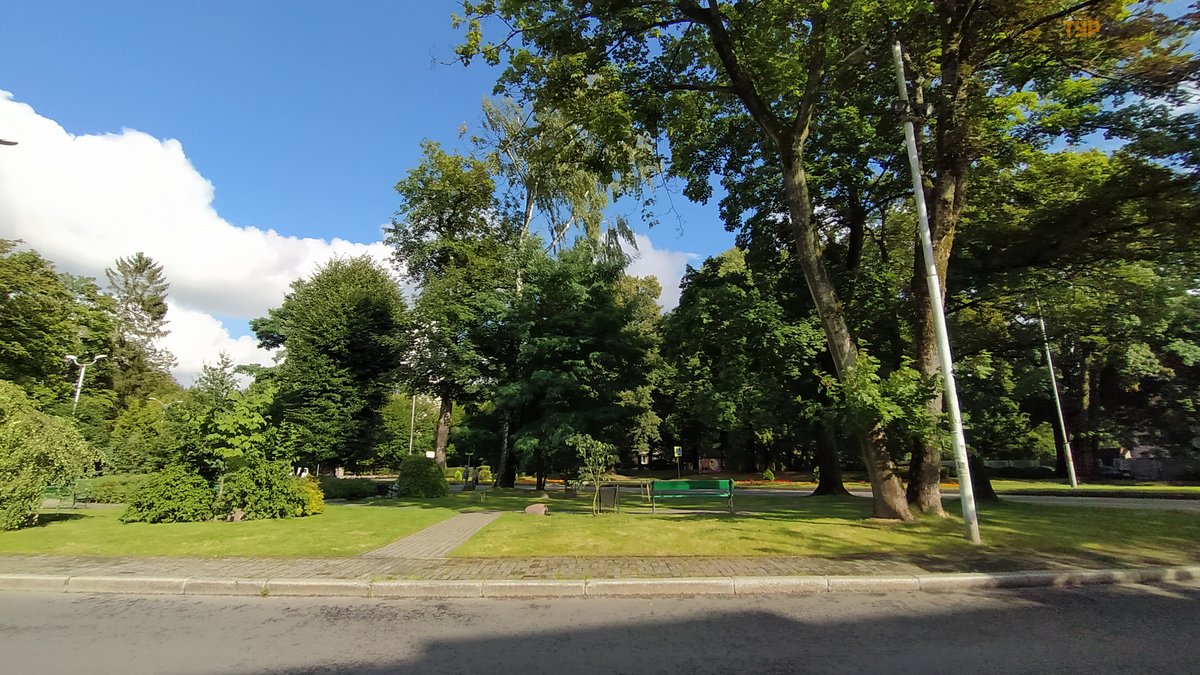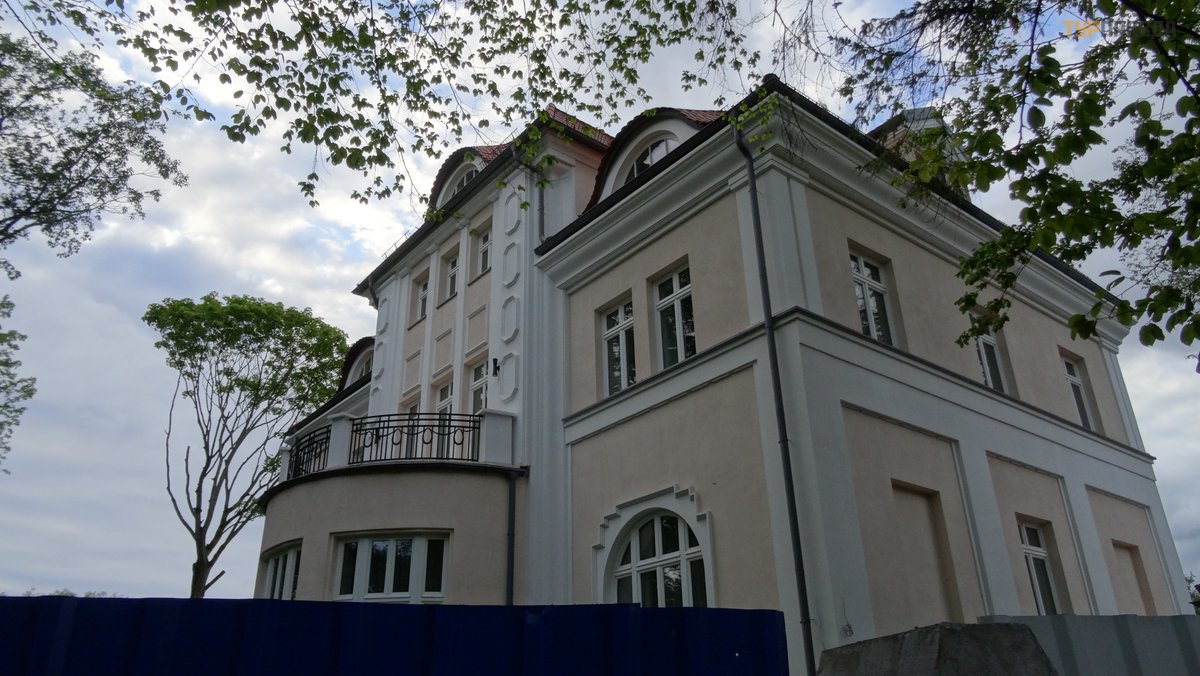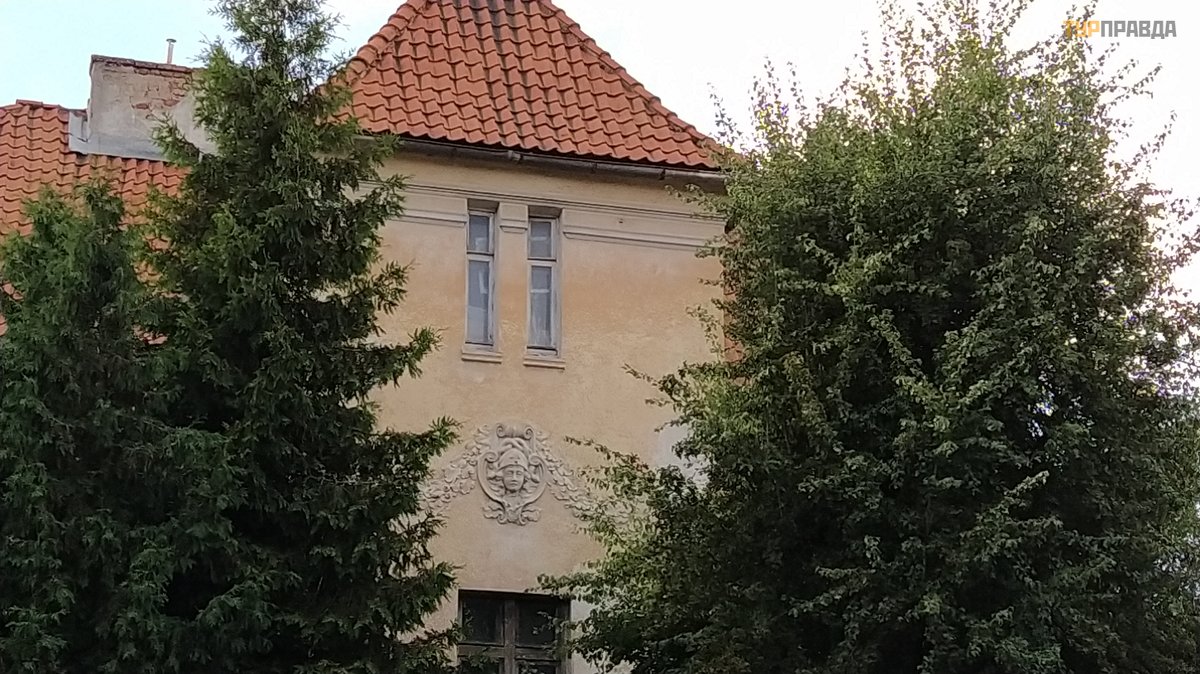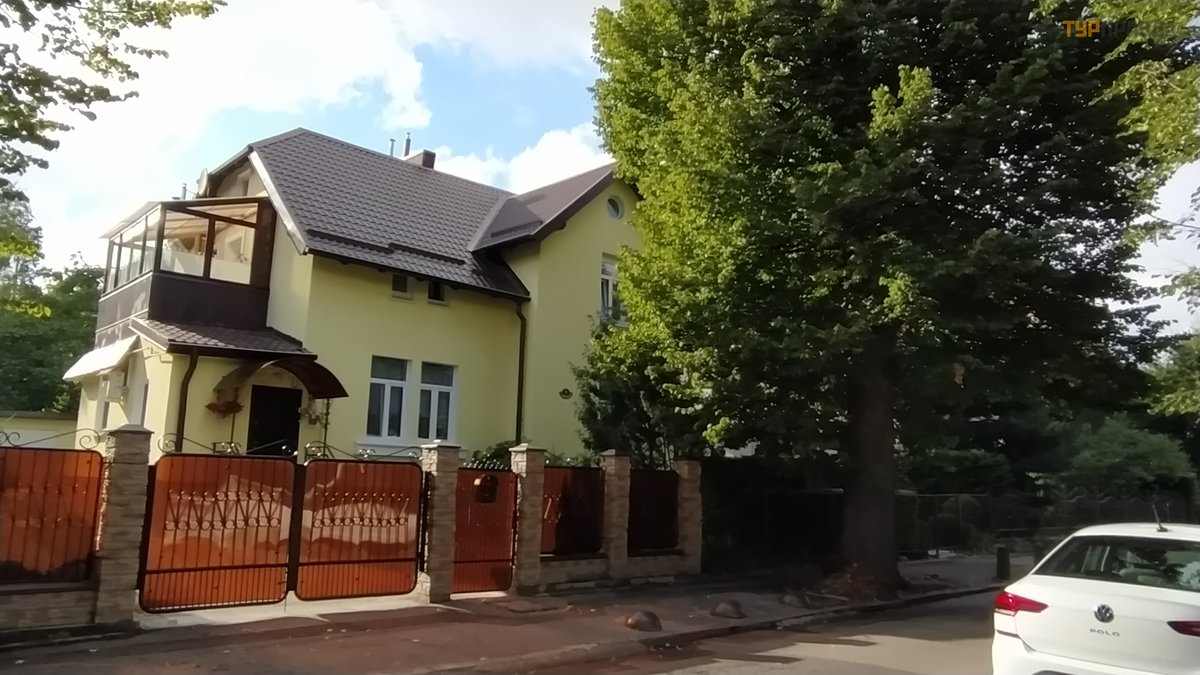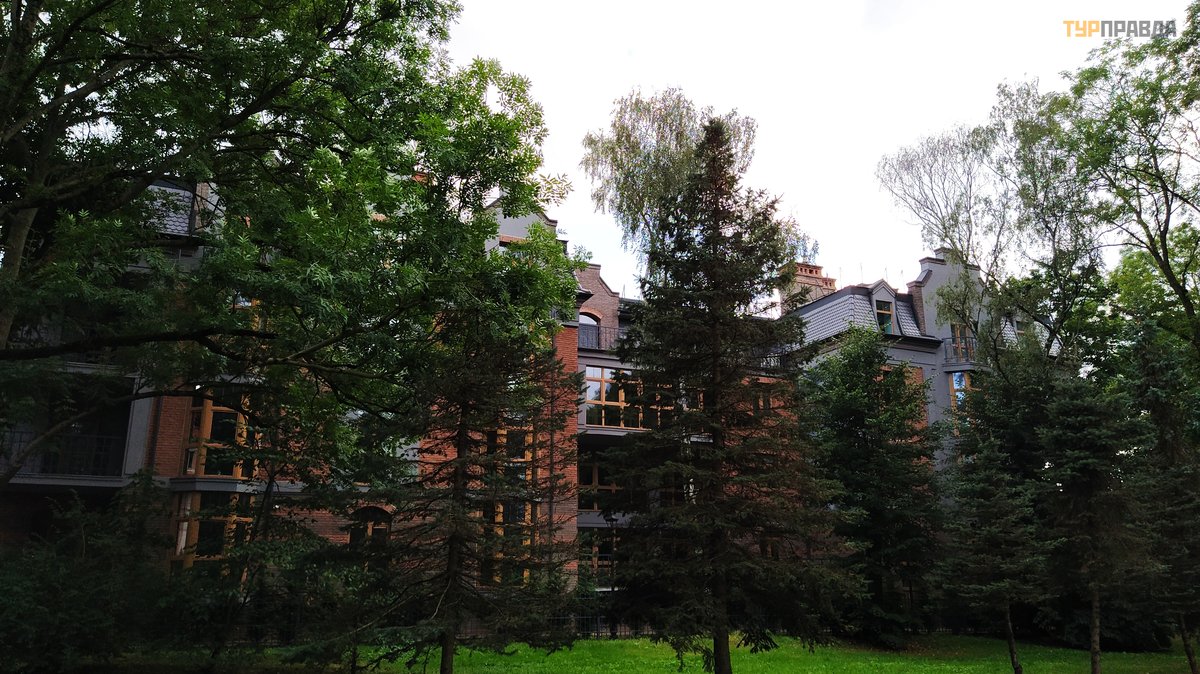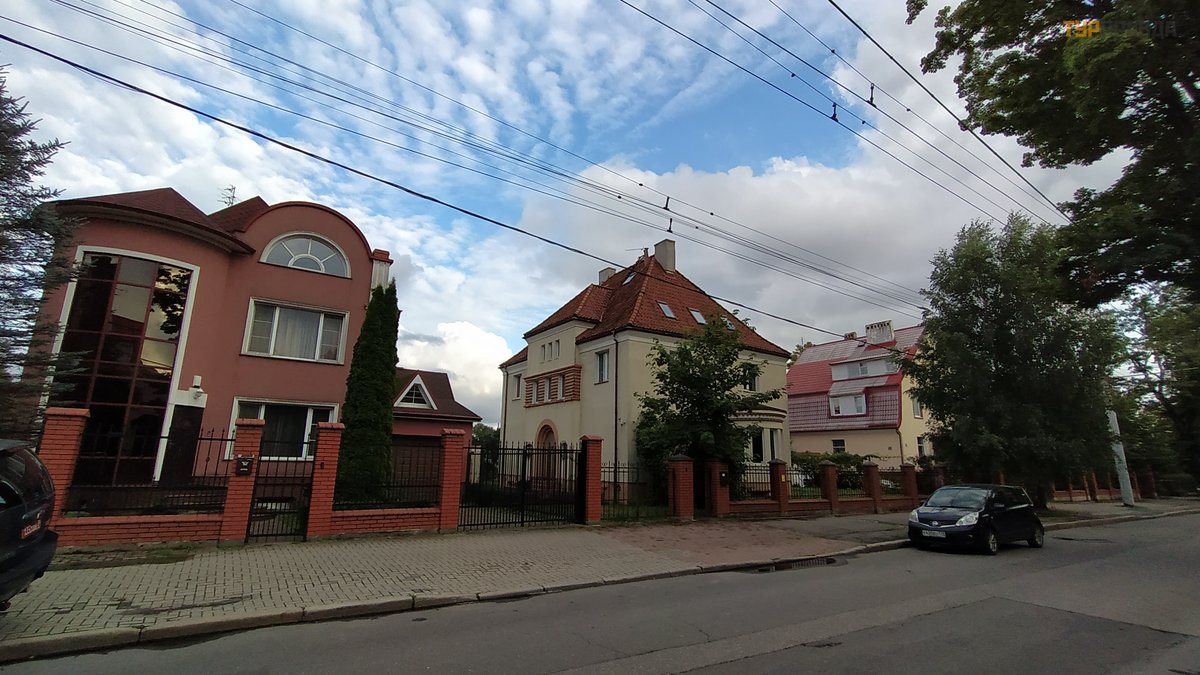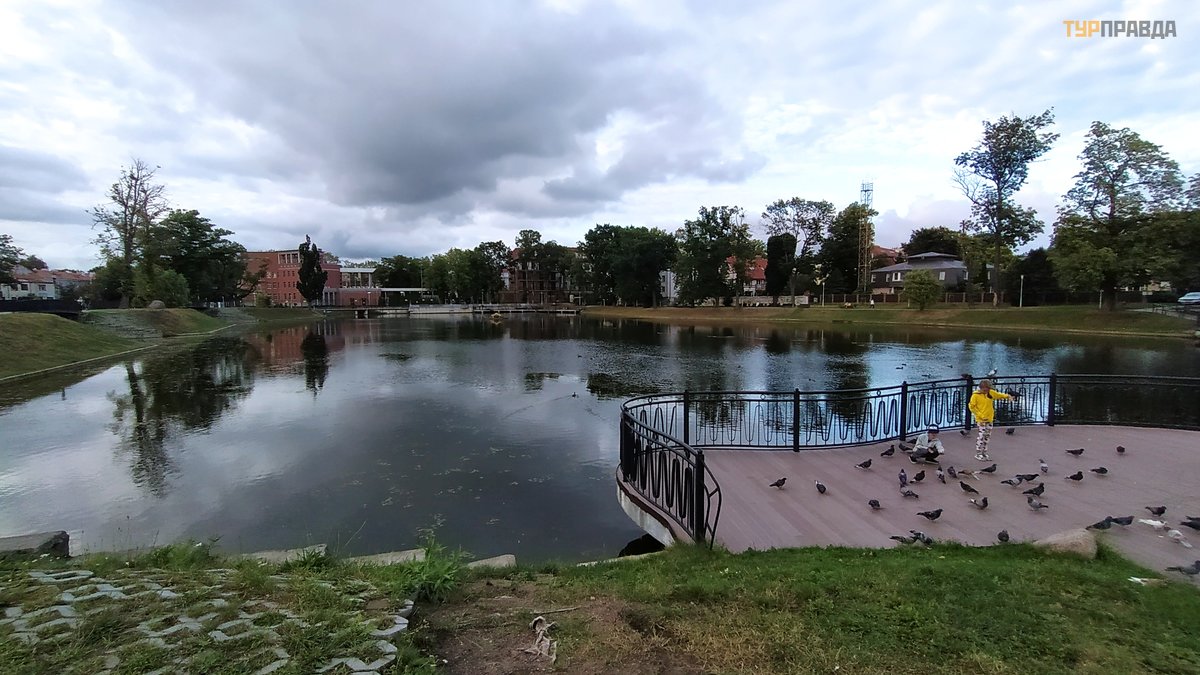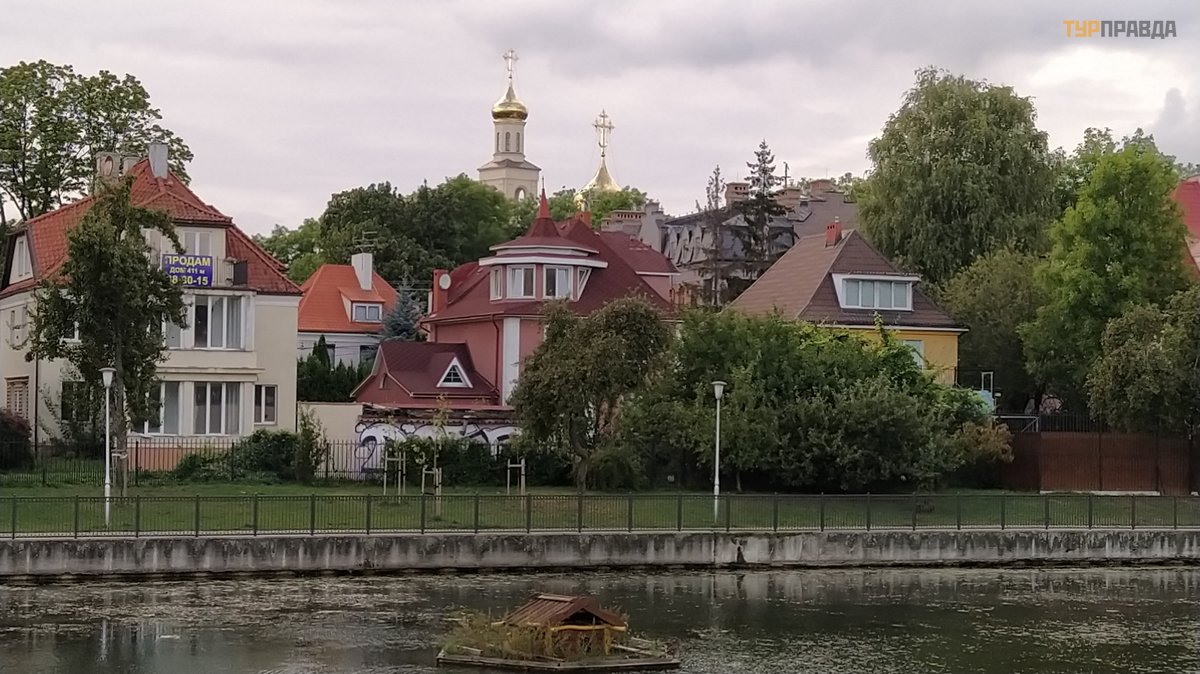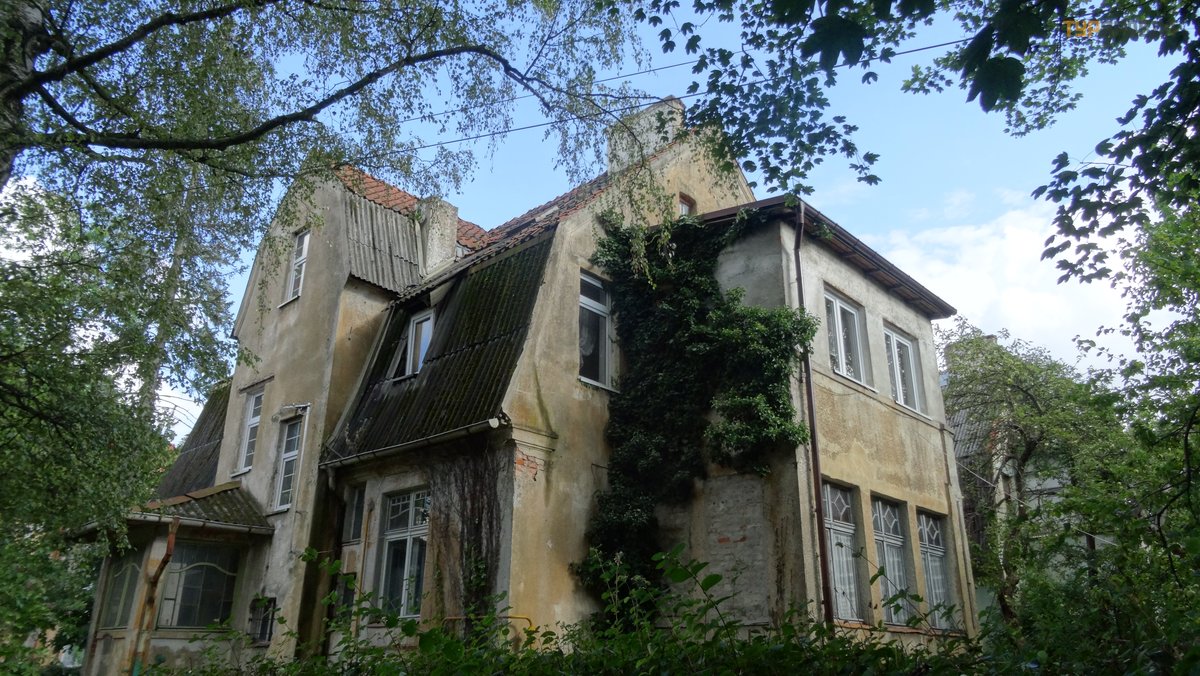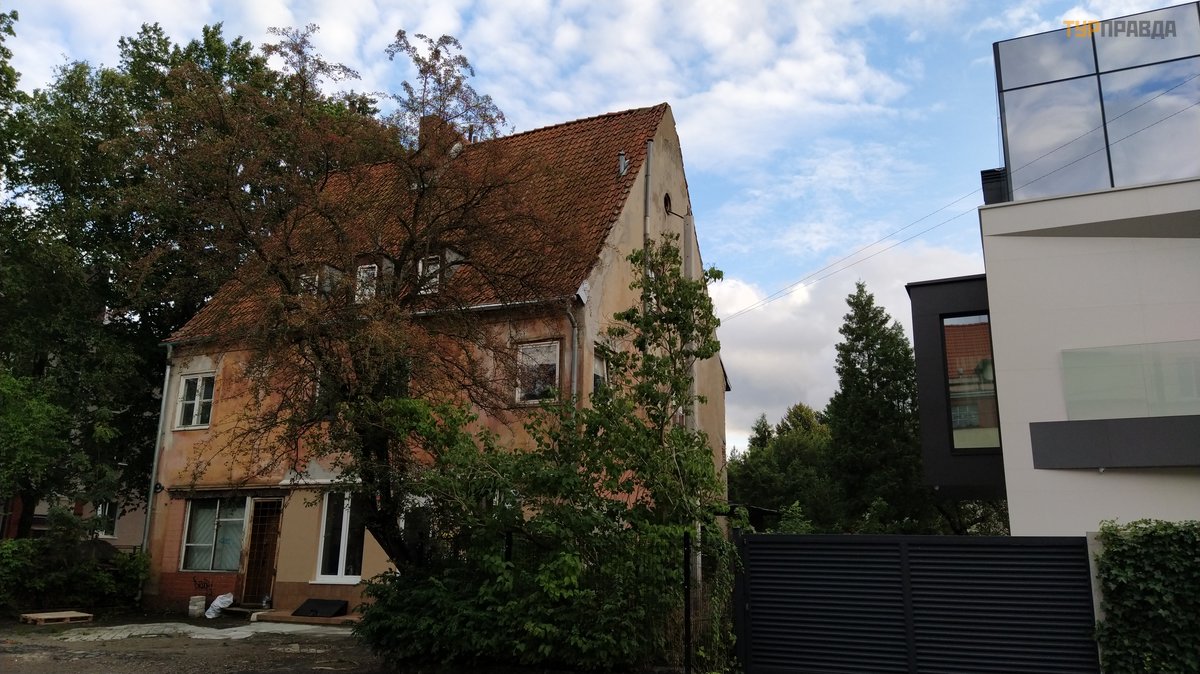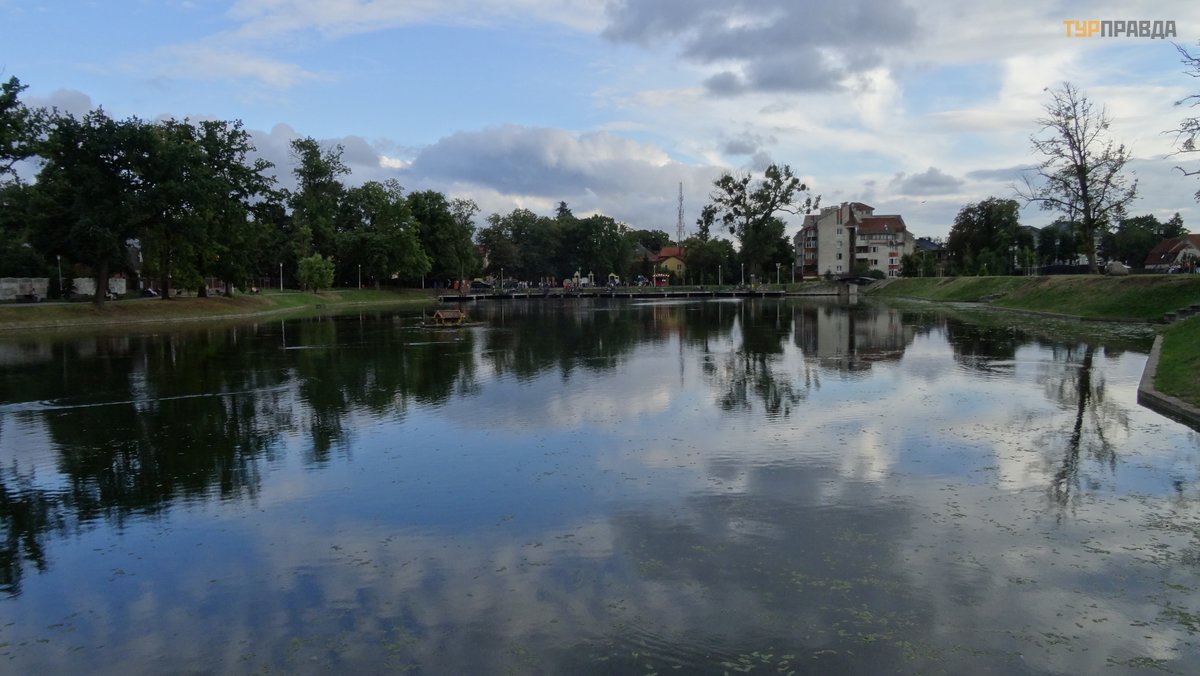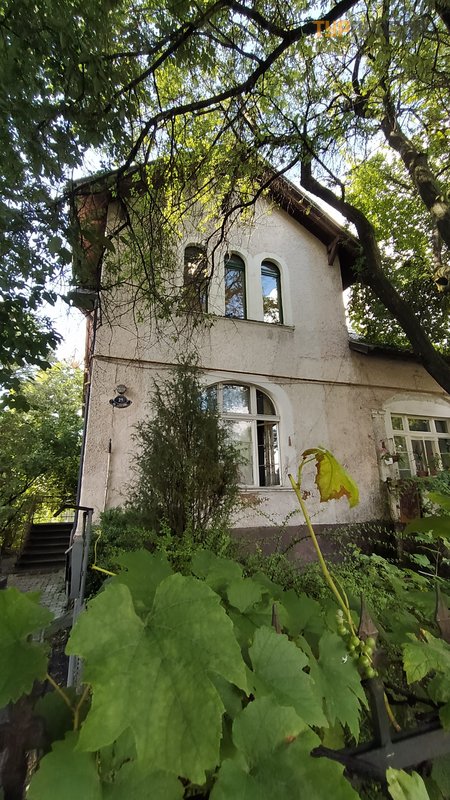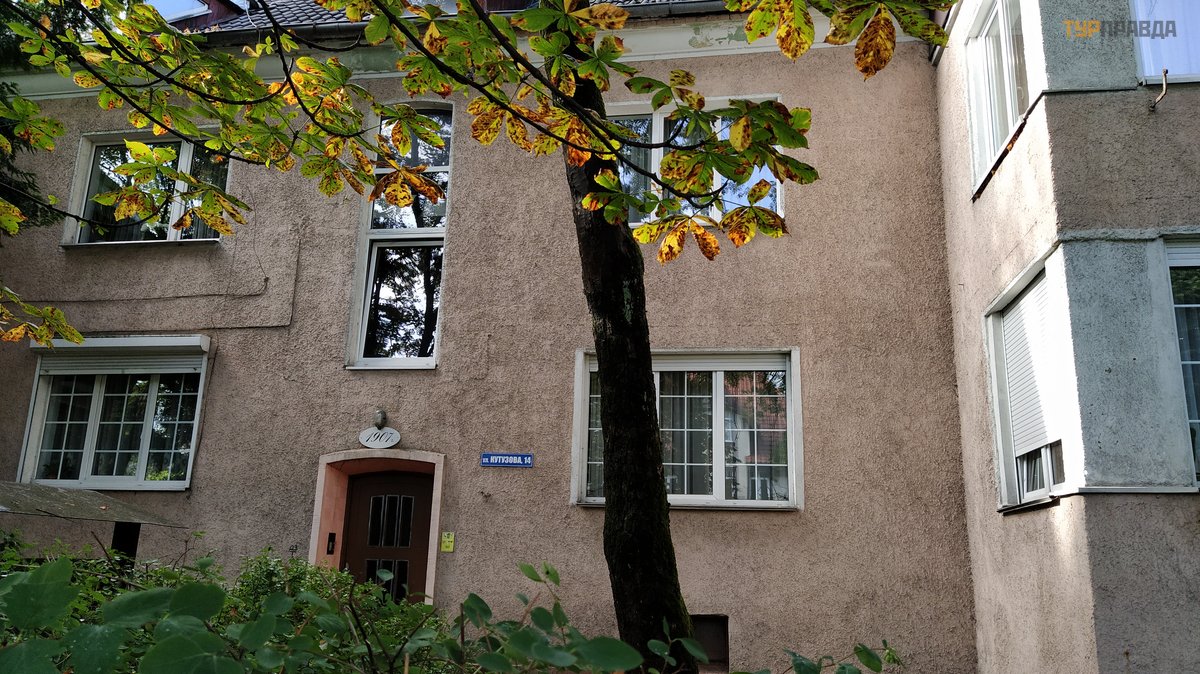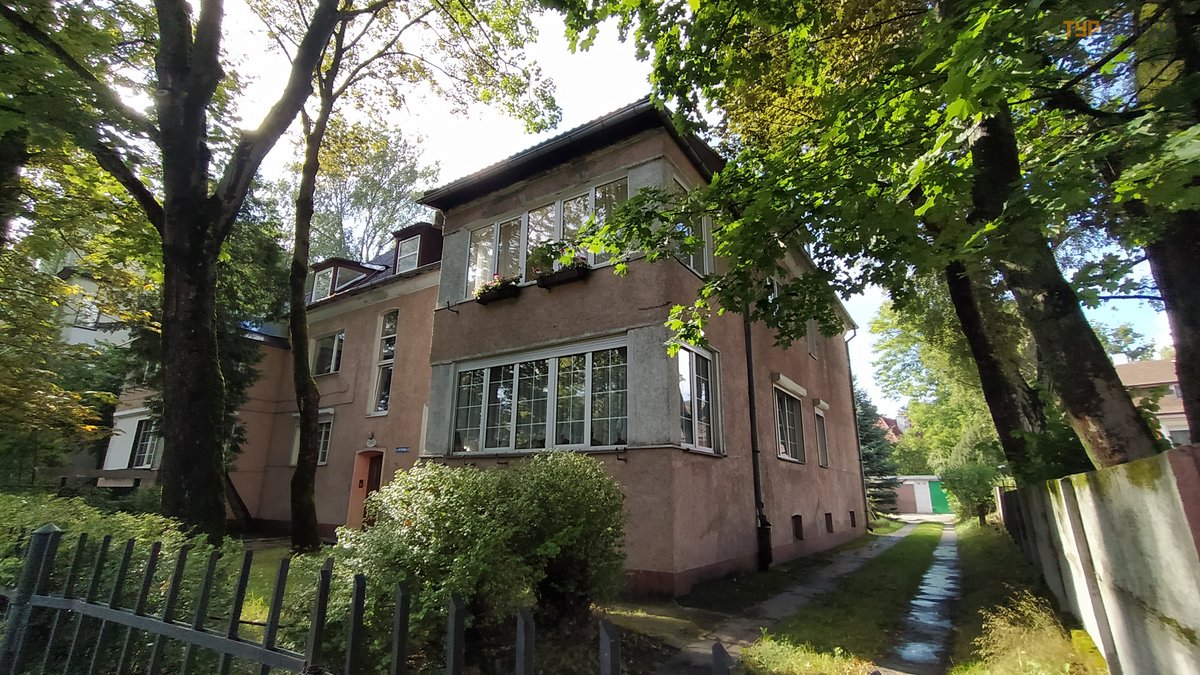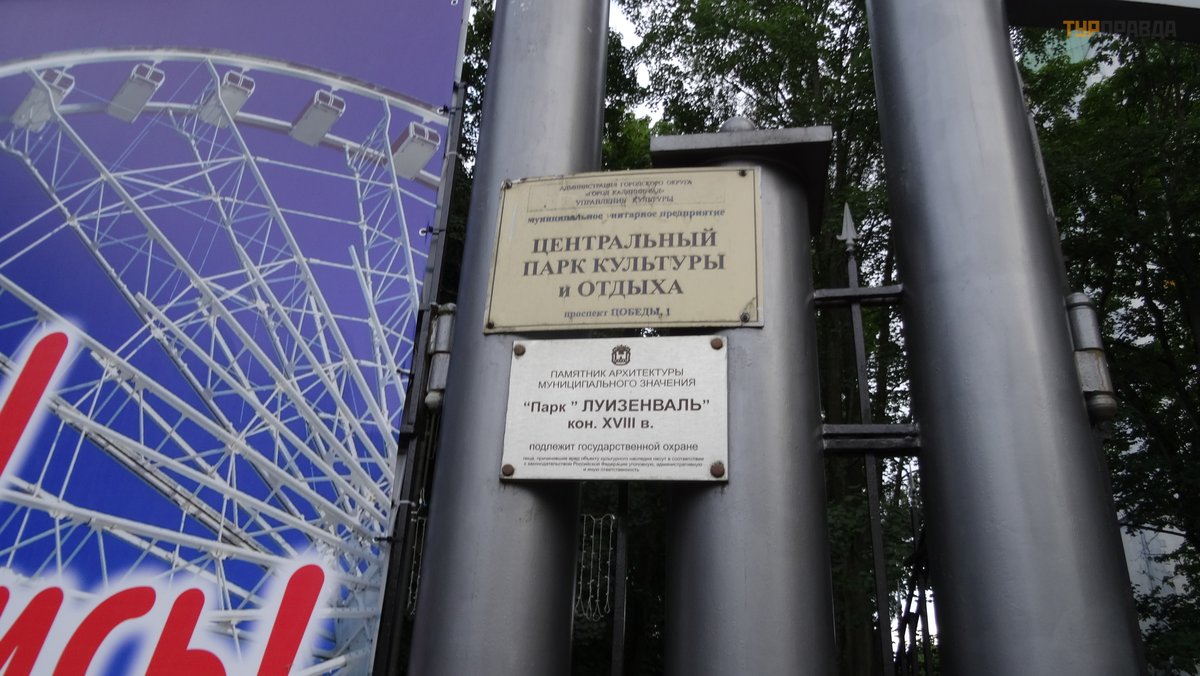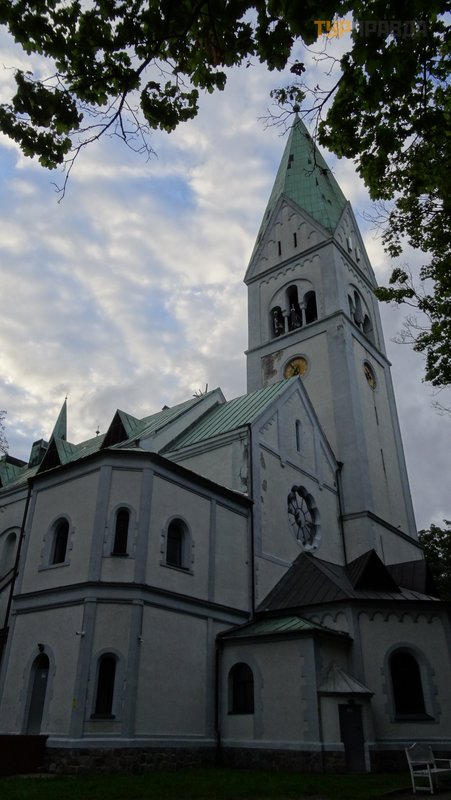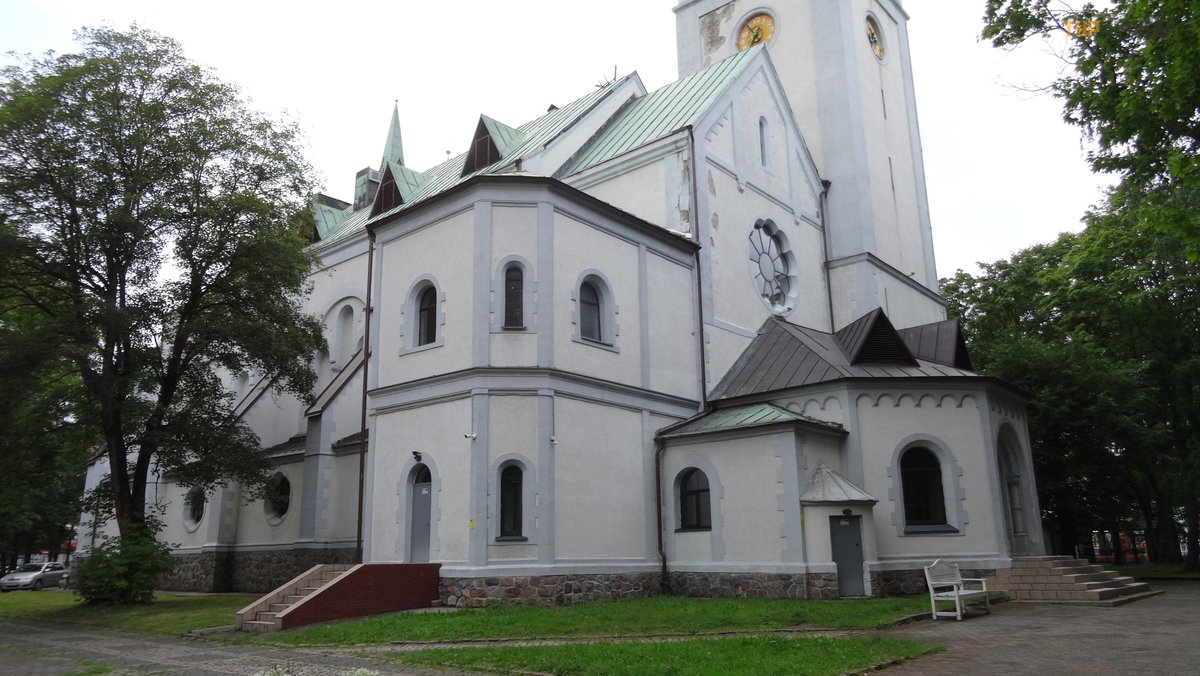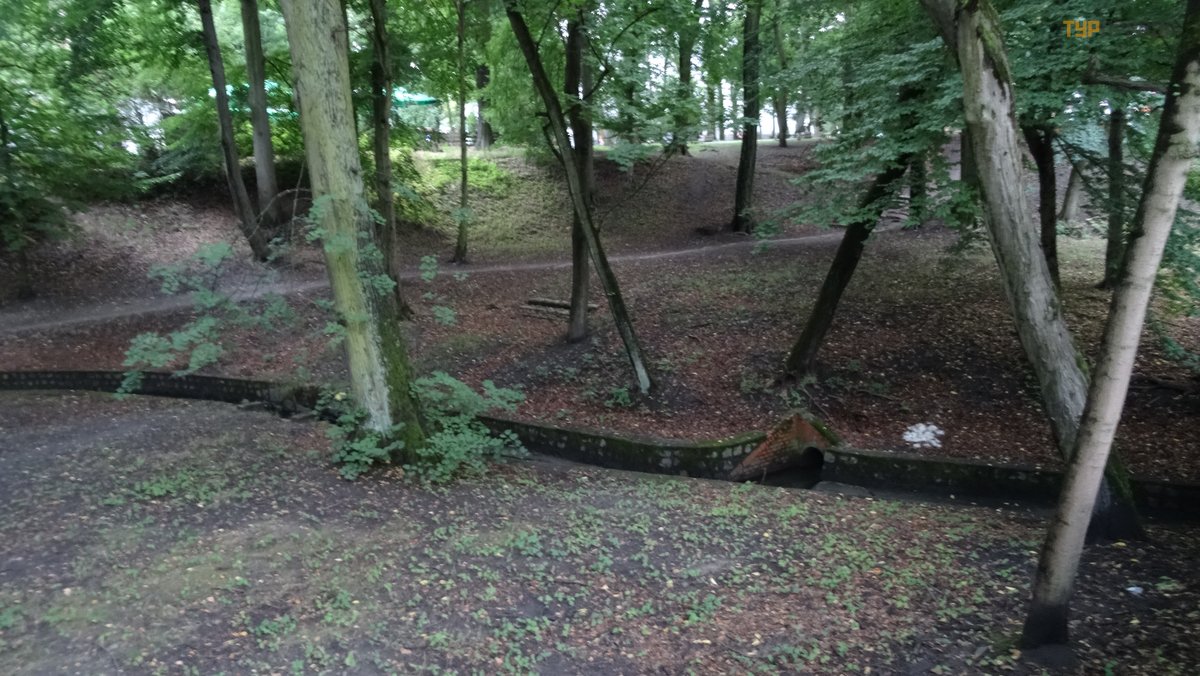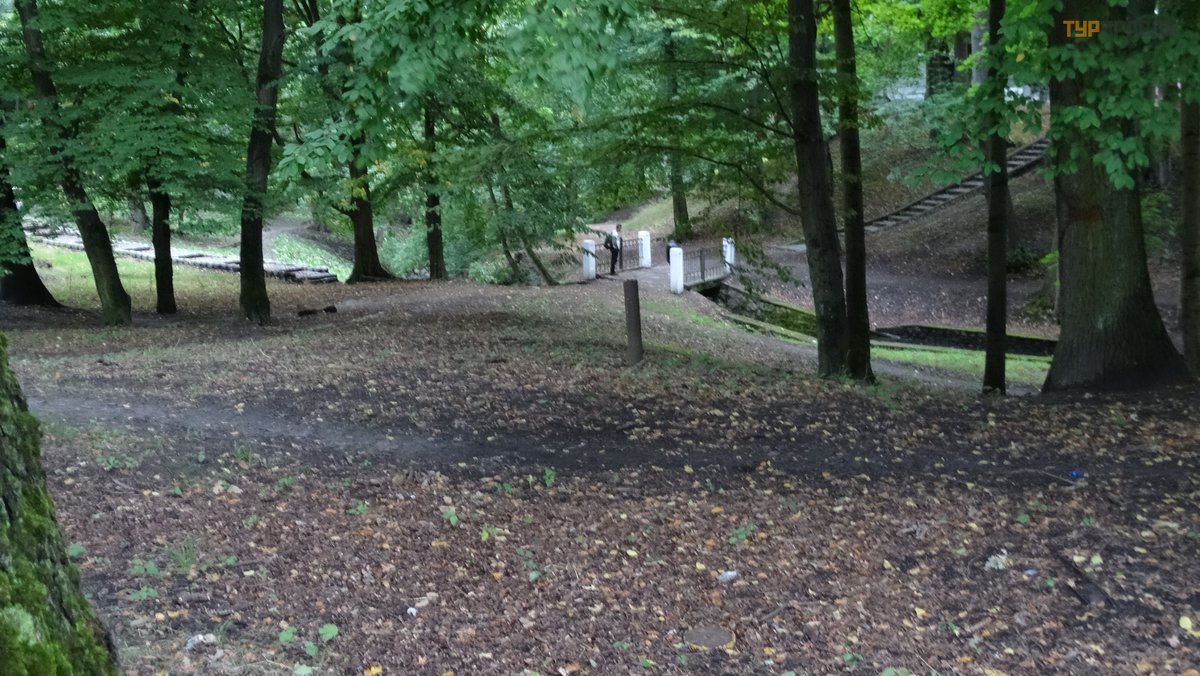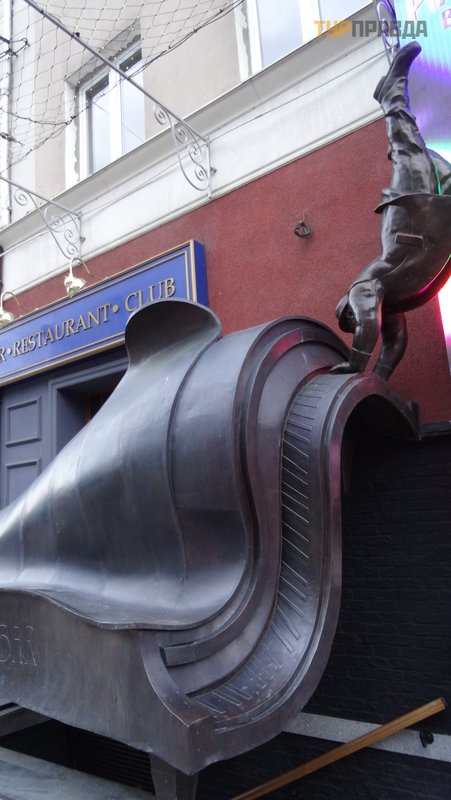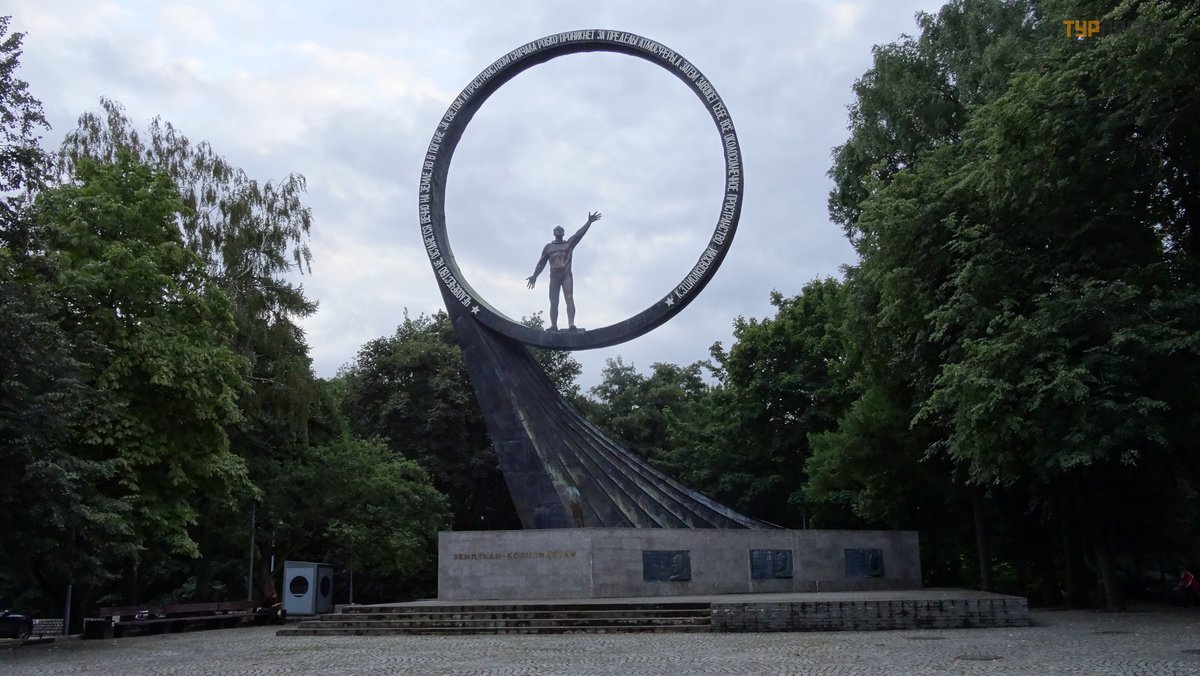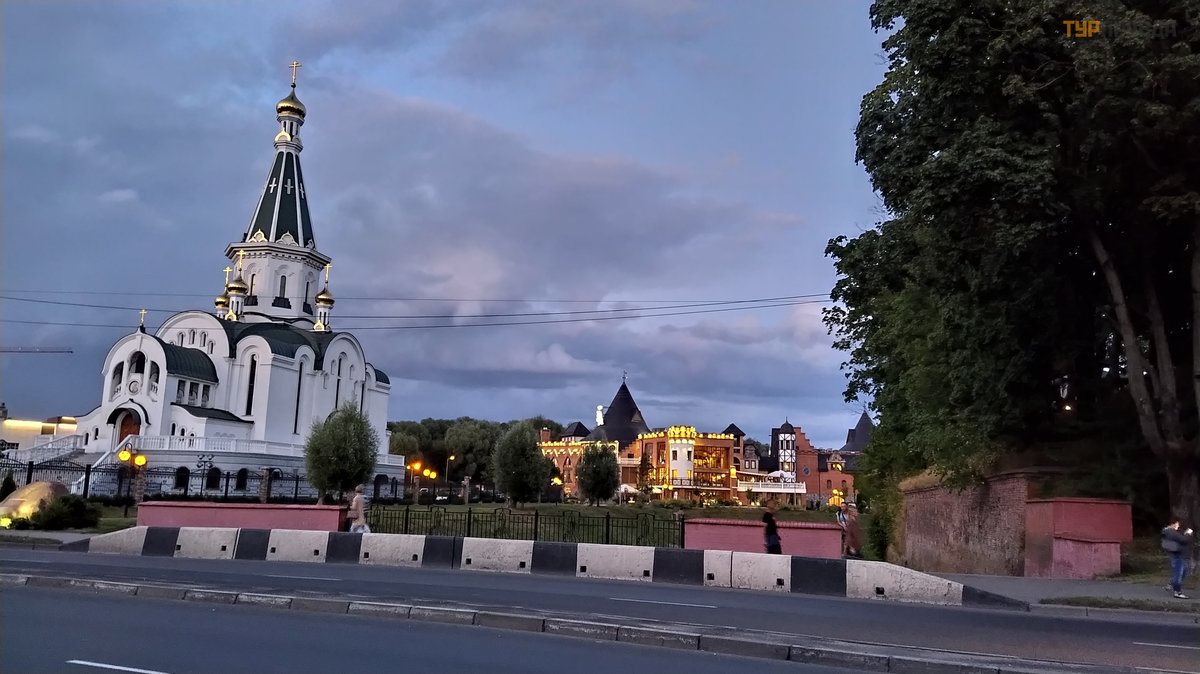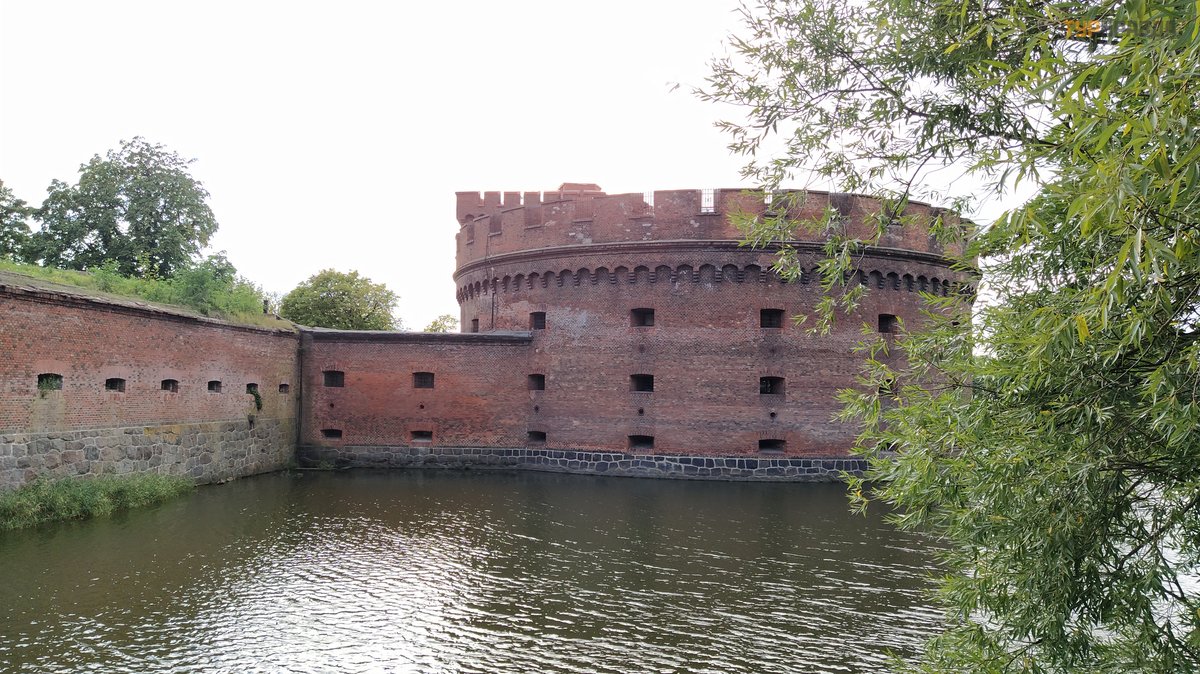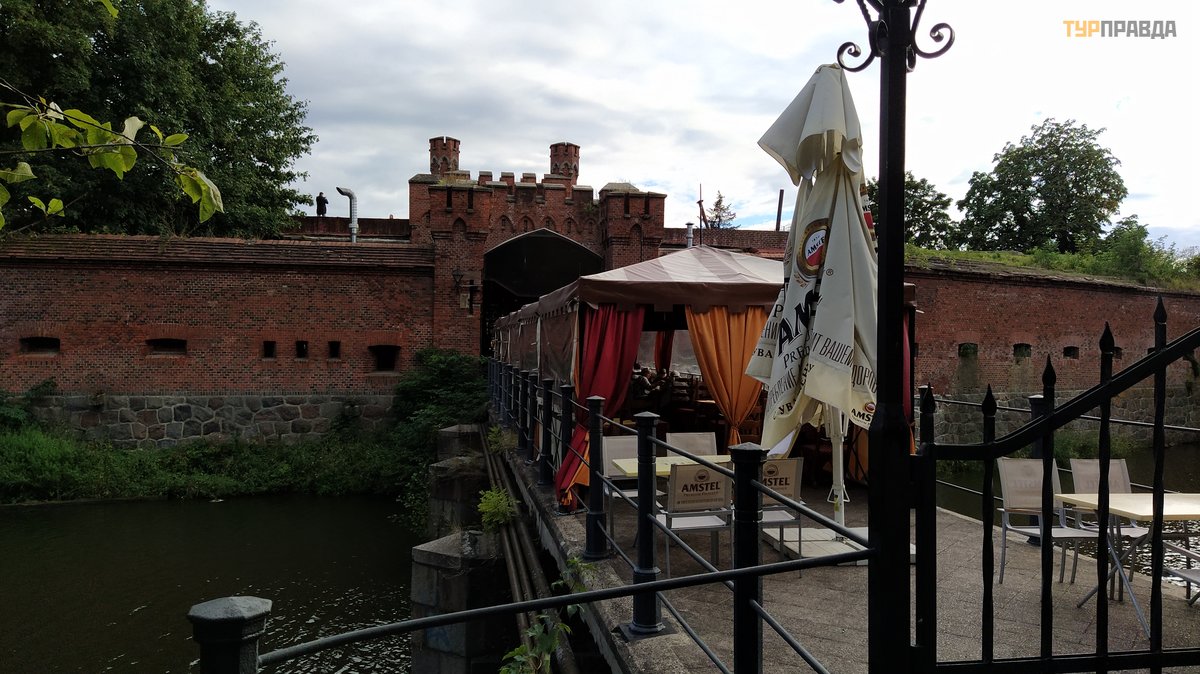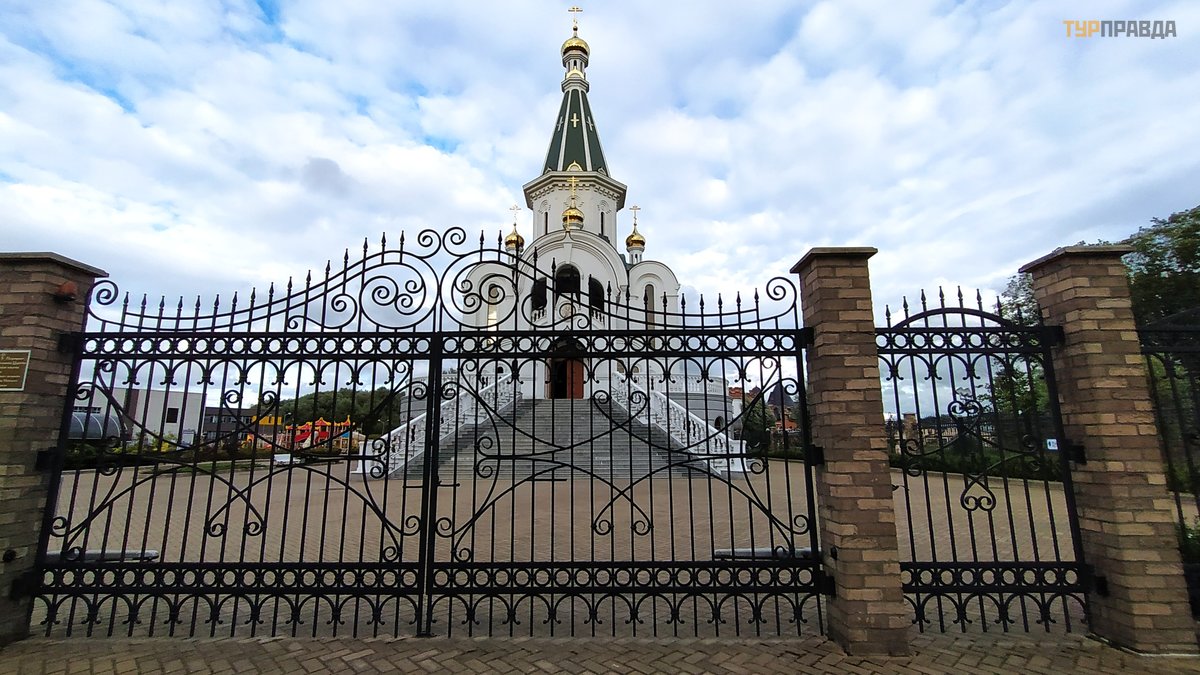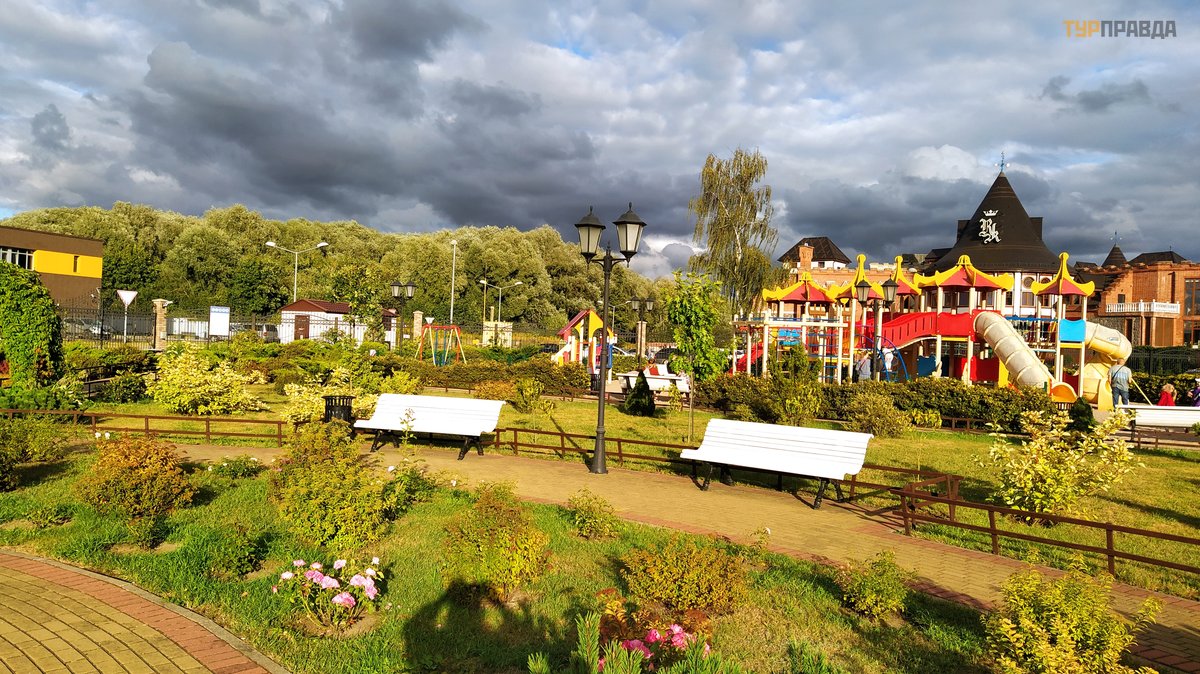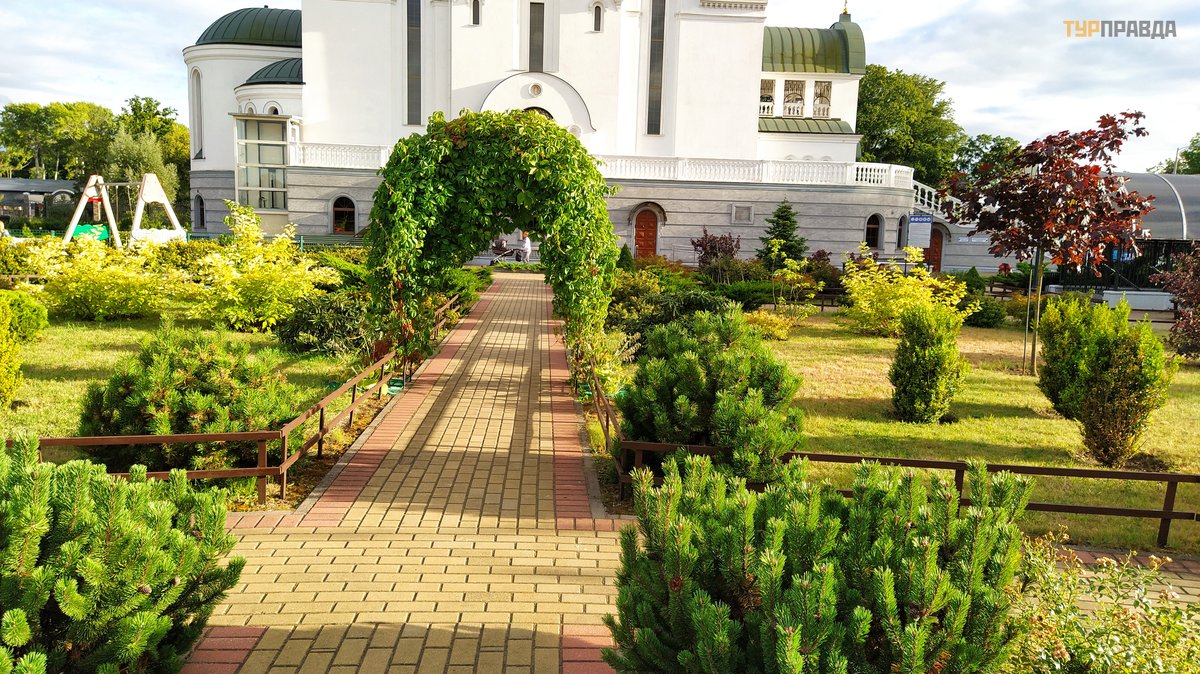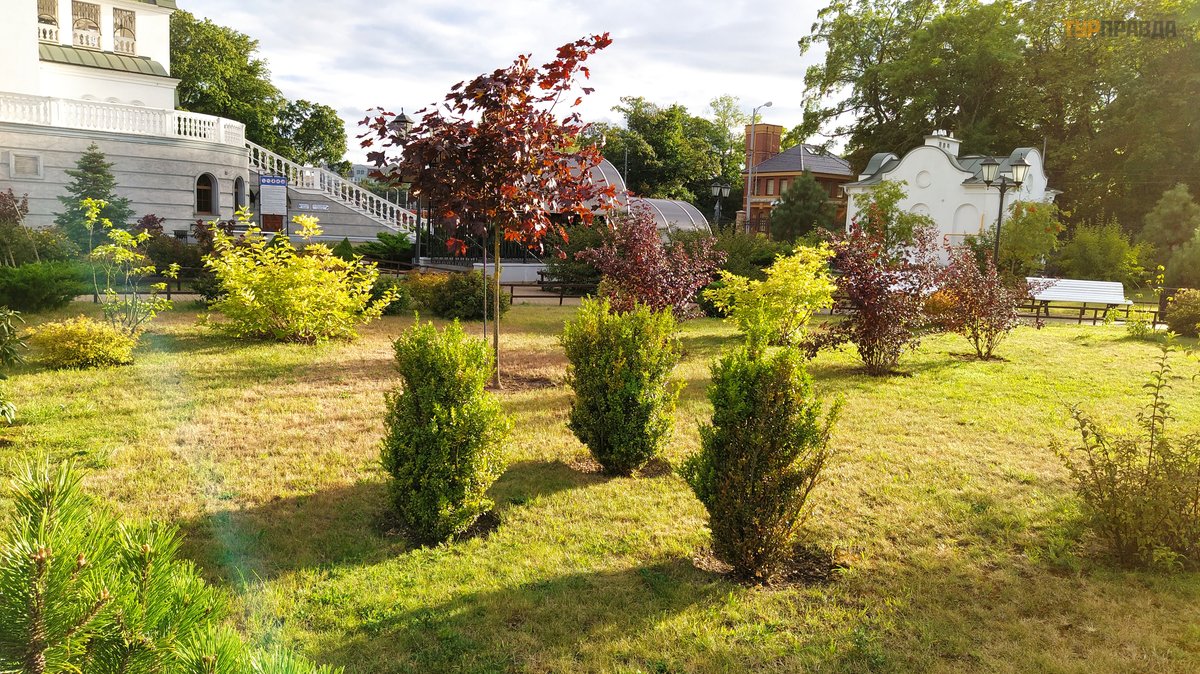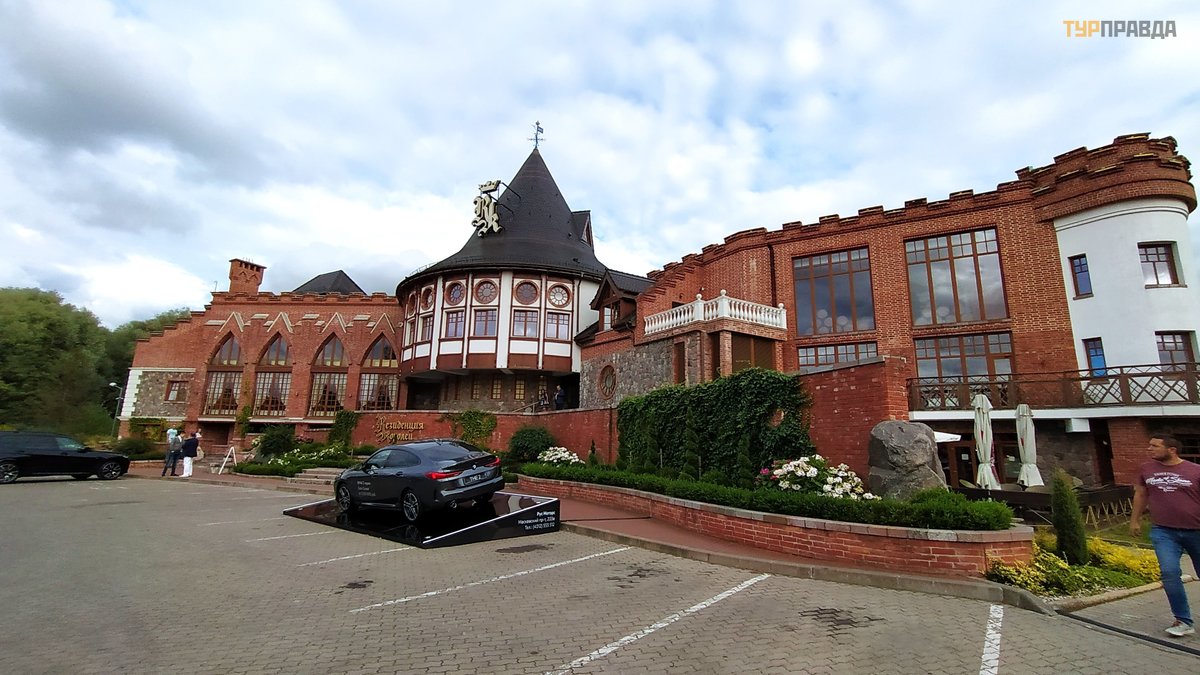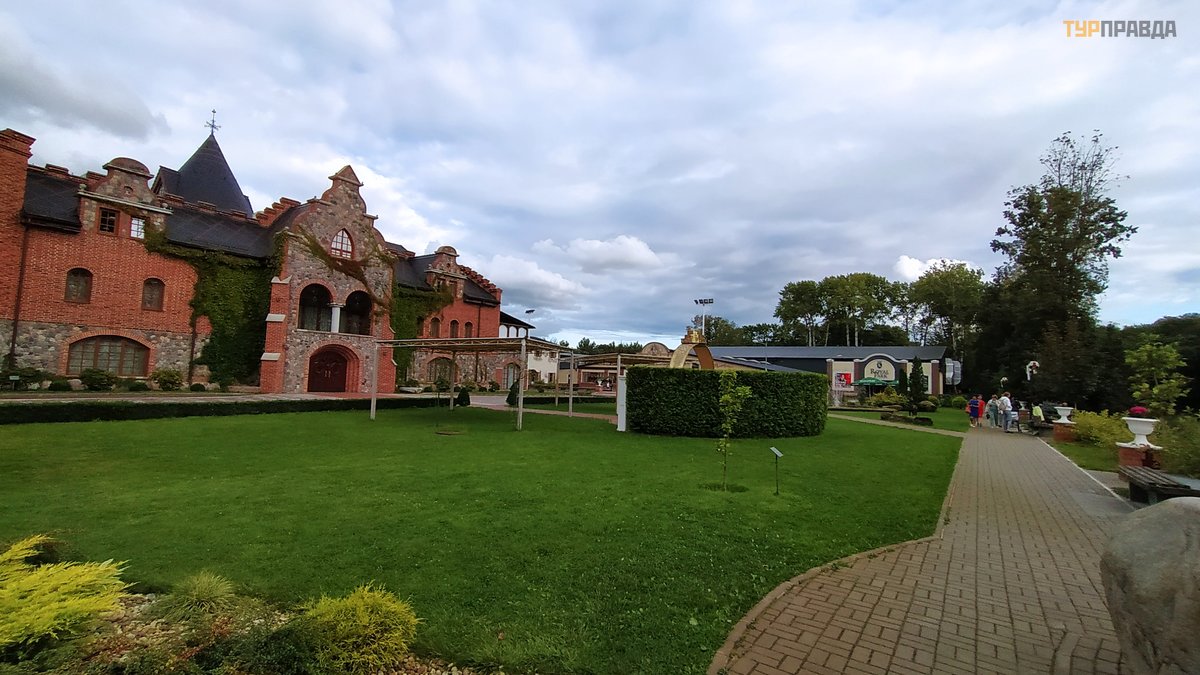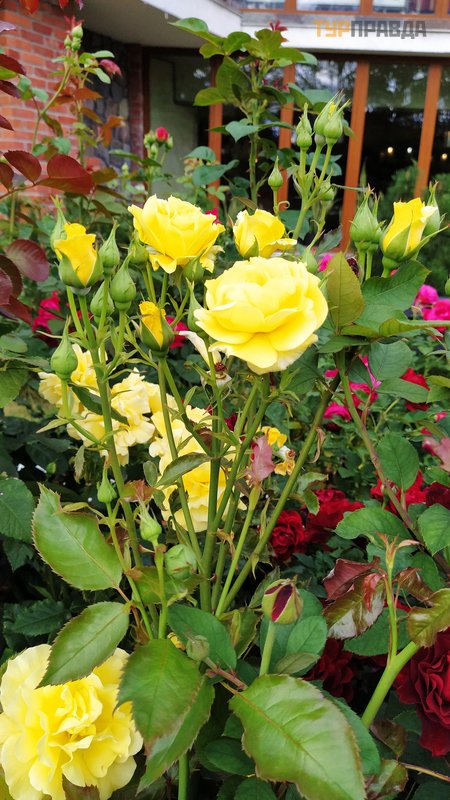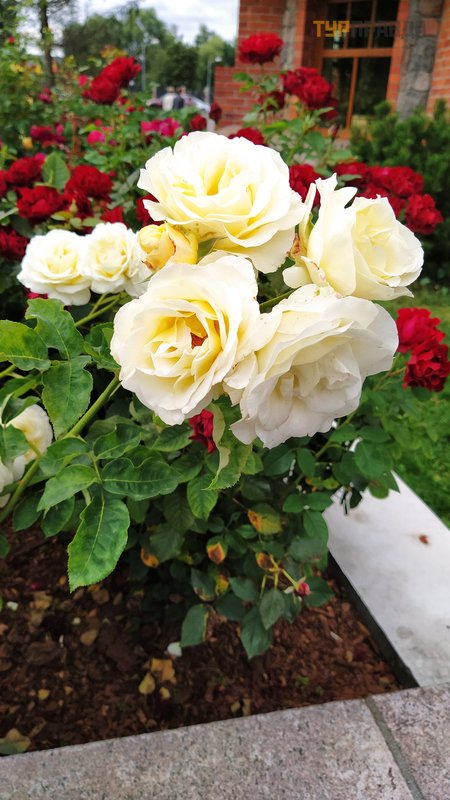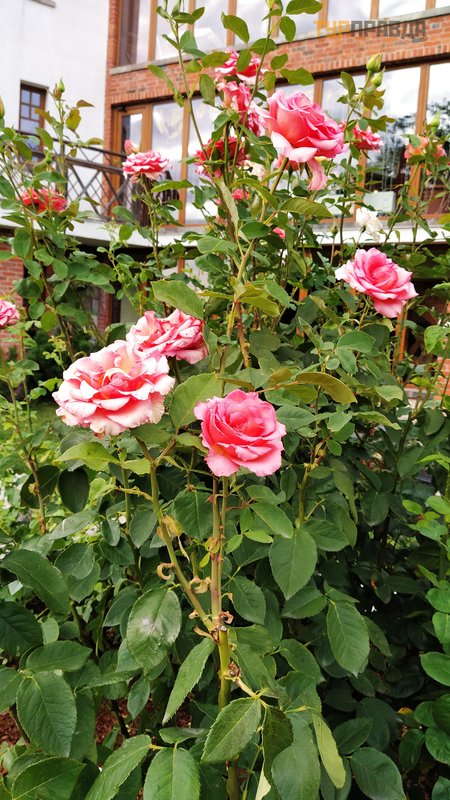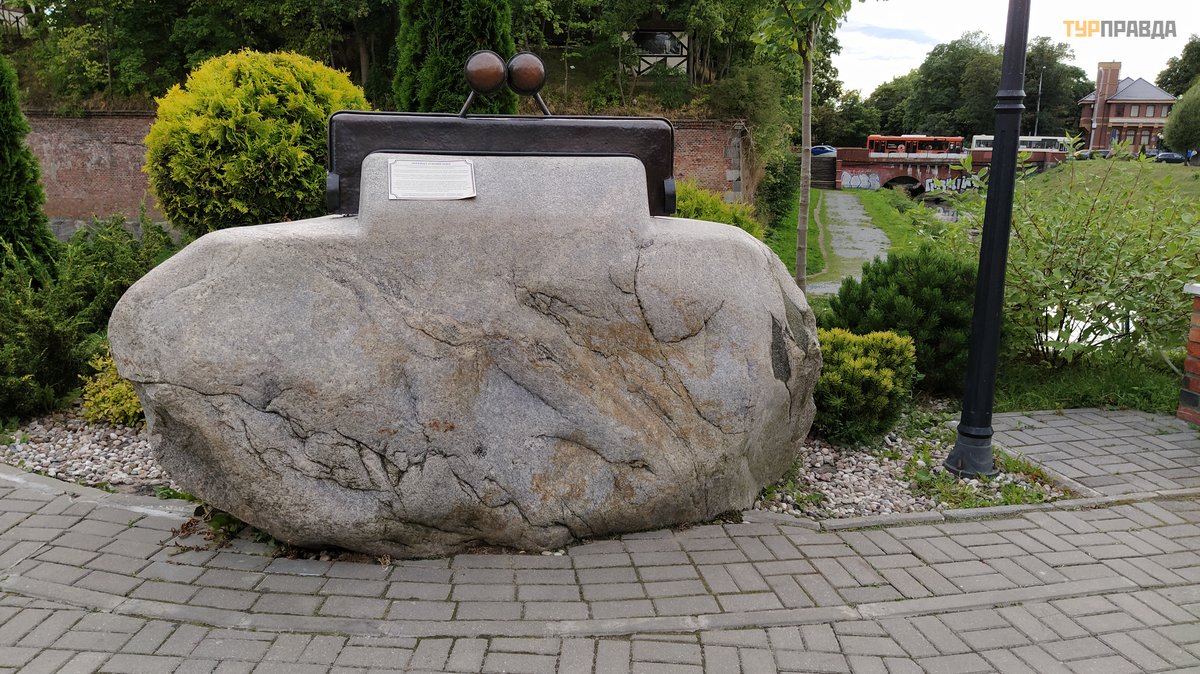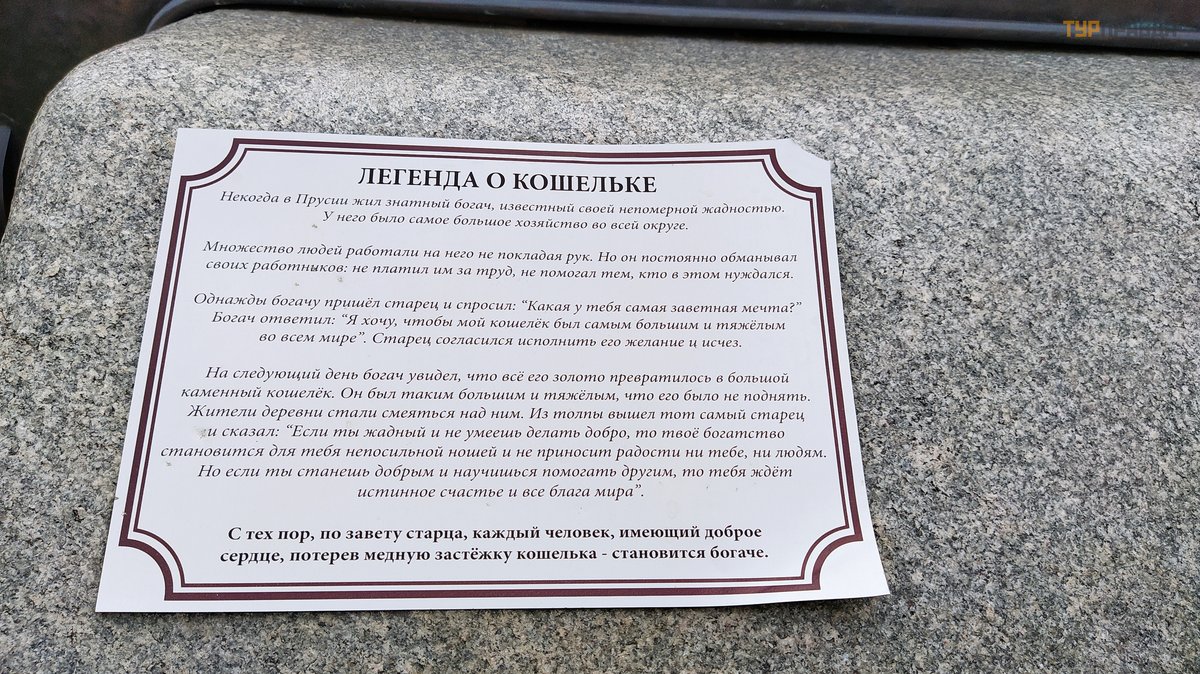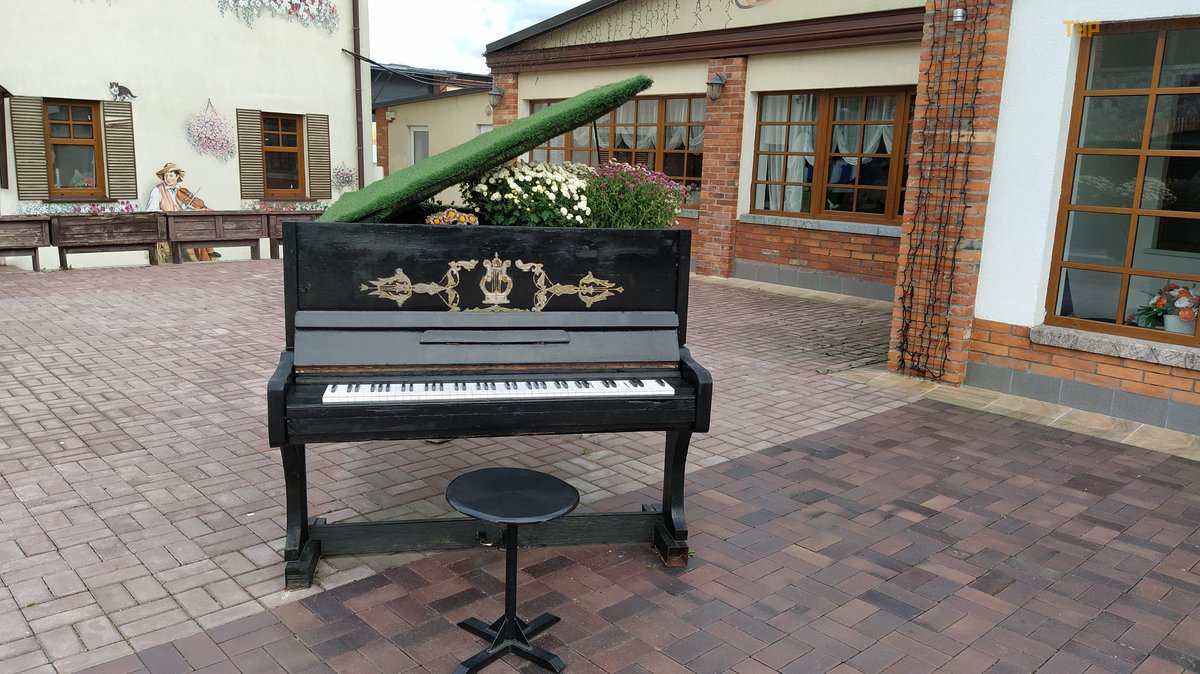In the Far Far Away Kingdom. Part three. Independent (in search of Koningsberg). Continuation
To be continued. Start here >>>
And I continue my journey. There is no time to think further, the last day, and one of the best preserved areas and one of the most beautiful - Amalienau - remained uncovered. Therefore, I quickly refreshed myself and ran to the bus. Yandex did not disappoint and accurately indicated the stop where to get off, he indicated that and I got out - everything is correct.
But with the fact that this time I didn’t really strain myself in the sense of running around (and my brain was already used to working in a calm mode) and seeing the old houses of Koeninsberg (without reading the sign, which specifically shows which direction the Amalienau district is), I turned in the other direction and ended up in another historical area - Hufen (it turned out already upon arrival home).
The districts are so close that it is not surprising to confuse, again, it turned out upon arrival home.
And the district is interesting, the houses are different, but multi-apartment, immersed in greenery, very pretty and cute, and I no longer doubted that this was an area of old German buildings. And the day is not dimensionless and already the second half of the day, I had to speed up a little.
So, Hufen, the historical district of Koenigsberg, originates from a rural community, and was first mentioned in 1286. The name "Hufen" comes from the word "hufa" - a unit for measuring peasant land plots in Germany in the 9th-18th centuries. In 1786, the mayor of Kö nigsberg acquires an estate in the settlement and, of course, at his direction, a road is laid, which was called Hufen Alley and Queen Louise was not without it, she really liked this place and in the 19th century the area began to develop actively. Schools, sports grounds, gymnasiums are being built, and, of course, a lot more so that people live comfortably, only when building up the area, unspoken rules were established - a limit on the number of floors and the presence of decor.
Walking around the area is a pleasure, some streets have preserved paving stones, many trees. Low houses, beautiful facades with huge windows and decor, columns, bas-reliefs, in general, everything that should be in my Far Far Away Kingdom.
And already realizing that this is a bit different (it was still interesting to see this area), I go out to the avenue and see the Amalienau sign - I need to go there.
Amalienau has been built up since 1900 closer to the estate, where Queen Louise spent the summer months. The project was carried out by the "Society for Construction and Real Estate", which was created by Friedrich Heitmann in 1898 (and this was their most important and large-scale project) and proposed a "garden city" project that was fashionable at that time, which involves low-rise buildings, an abundance of trees and flowers . And since it was an elite suburb, each house was built according to its own project, and there were no two similar houses (I look at my area, all twin brothers), and even then the houses had water, gas, electricity and all the delights of a comfortable life .
Amalienau had an unusual layout for a Prussian city: many alleys, circular squares, curved streets, there were two such districts according to the “garden city” building principle in Koninsberg, the Amalienau district and the Maraunenhof (which was visible from the window of my hotel). Usually the name of the house-villa was obtained by the name of the owners or architects-designers. And here I looked and studied everything on my own, and when I arrived and climbed on the Internet, I found the names of some villas and the year they were built.
From this place I just want to show all the beauty and attractiveness of this area. It’s just a pity that there was less and less time left, each house attracted with its individuality and I wanted to examine each one.
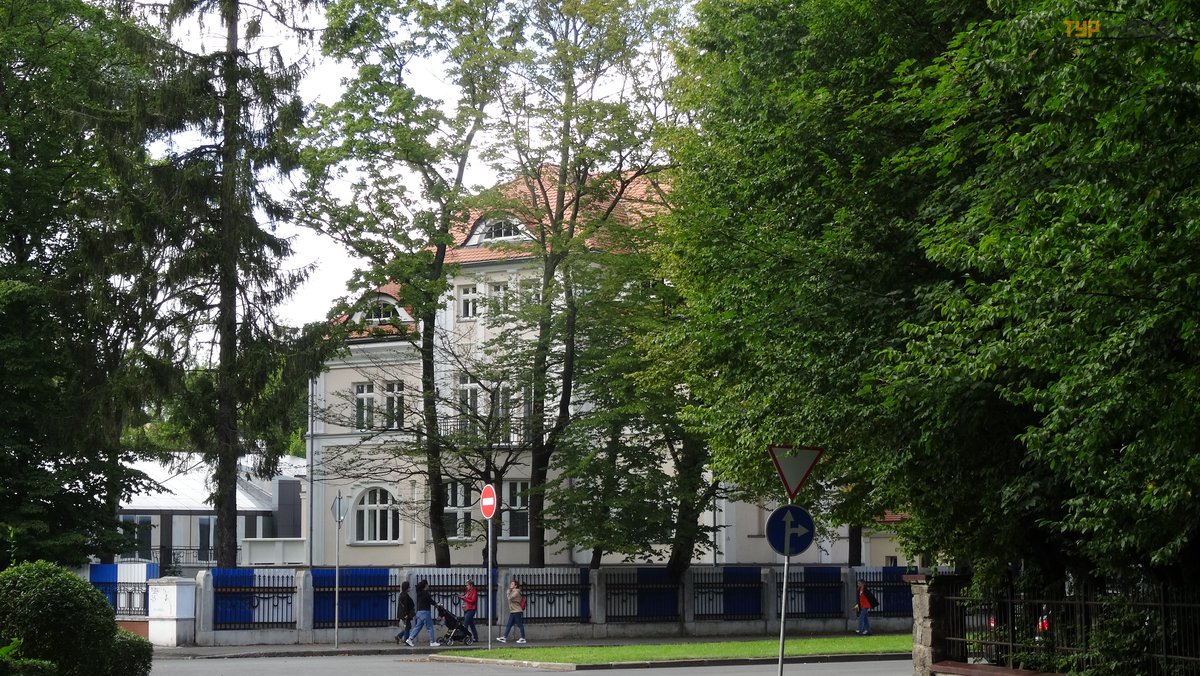 Villa Yafa from 1891, now under restoration
Villa Yafa from 1891, now under restoration
Moving from house to house, taking pictures of everything, I go out to the Float Pond or Khlebnoye Lake, very similar to the lake near my hotel, it’s not for nothing that the project is one “garden city” and it’s a pity that there was so little time to visit this district (there will be a reason to come again and already with a more developed plan).
The development plans were a little hampered by the First World War and, of course, the financial crisis followed it, and then the area was built up without such a scope, everything was simpler, but still pretty.
Somehow it started to get dark and the phone could not withstand such a load, having squeaked, it was completely discharged (but there was also a camera, which immediately set to work), but still it was necessary to return.
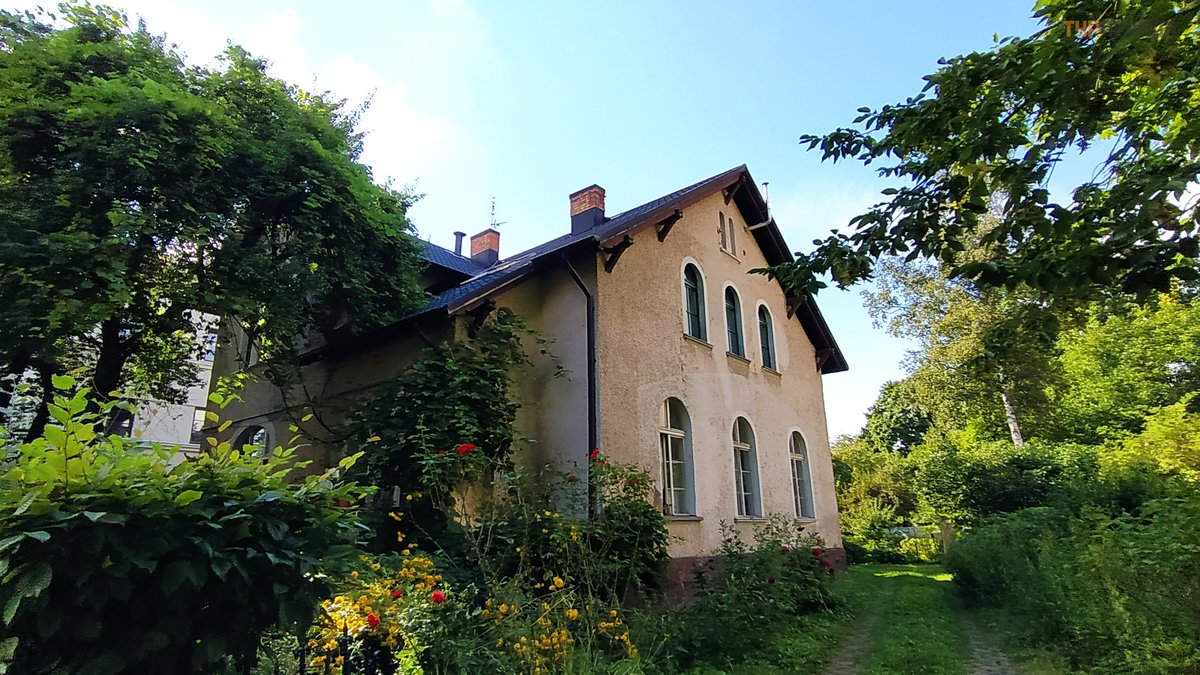 And about this house, a local resident (with traces of old-time intelligence on his face and a bruise under eye) said that the house remembers Napoleon and really wanted his house to be shown to people
And about this house, a local resident (with traces of old-time intelligence on his face and a bruise under eye) said that the house remembers Napoleon and really wanted his house to be shown to people
Somehow on that day, the buses were not very good, and I continue my journey on foot, with the hope that at the next stop the bus will catch up with me, and then how it goes. And everything turned out to be right, on my way I come across the Central Park of Culture and Leisure, it used to be the “Park Luizenval”, and it is also a monument.
At the entrance to the park of St. Louise Church. It was built in 1899-1901. At the beginning of the 19th century, the park became the property of the Prussian king and turned into the Kö nigsberg residence of Queen Louise, who was very fond of visiting there with her children. Kirkha is well preserved, and in 1976 it was converted into a children's puppet theater.
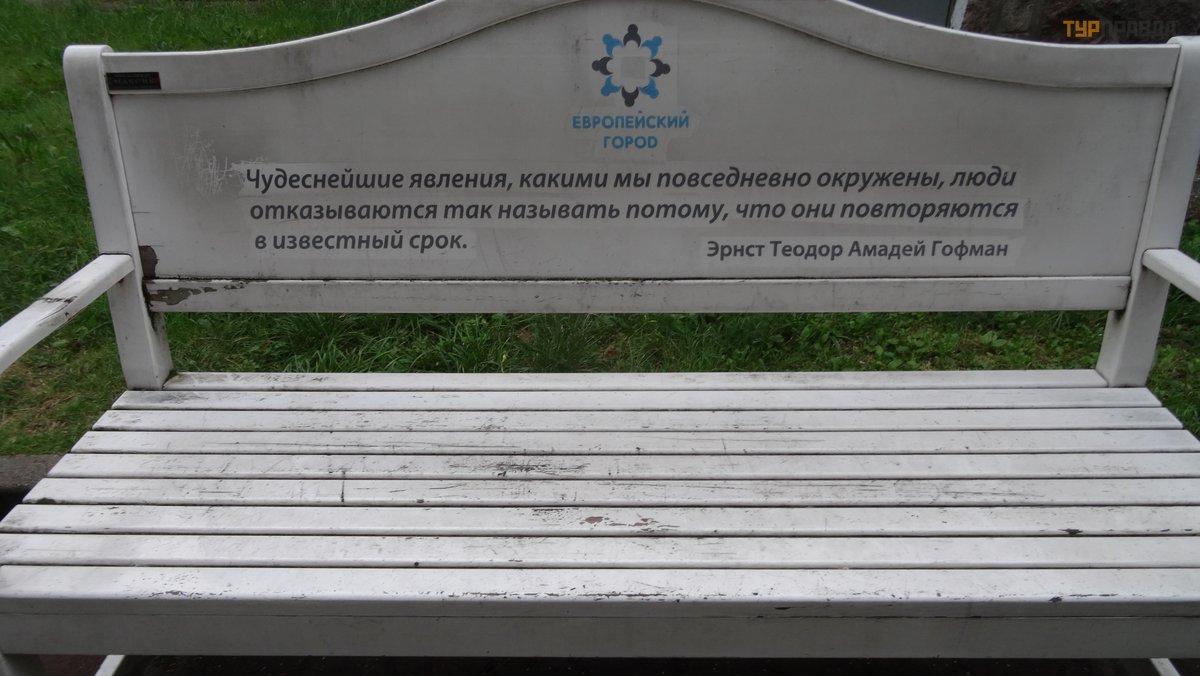 And, as everywhere else, shops with different sayings of famous people
And, as everywhere else, shops with different sayings of famous people
The park is quite small, but the way I like it - with shady alleys, bridges, like an island of wildlife in the city center, there, of course, there are playgrounds, a summer theater (everything became clear upon arrival home).
And then there were all sorts of interesting places that I photographed along the way.
And one of the evenings after the tour, while walking around the district in the evening, I spotted such a pretty square, of course, you need to see it.
The path passed by the Rossgarten Gate (where there was dinner in a fish restaurant) and you need to look at the bridge and see how everything is arranged already in the light of day (it's interesting) - the moat, walls, towers do not give me peace (the history of the city).
Opposite the square and the Orthodox Church of Alexander Nevsky, a beautifully landscaped area, a playground, a wonderful place for walking.
Next, the Residence of the Kings hotel is a new building, but stylized as fortresses and buildings of Koeninsberg, admission is free, take pictures as much as you like, that's where I broke away, re-photographed all the roses, houses, territory, and when I arrived, I looked - and oh, how little I shot due to lack of time.
In terms of this evening, there was one more Wishlist, to walk around and see the Lithuanian Wall - another part of the fortifications of Koninsberg, and I went there.
Continued here >>>

